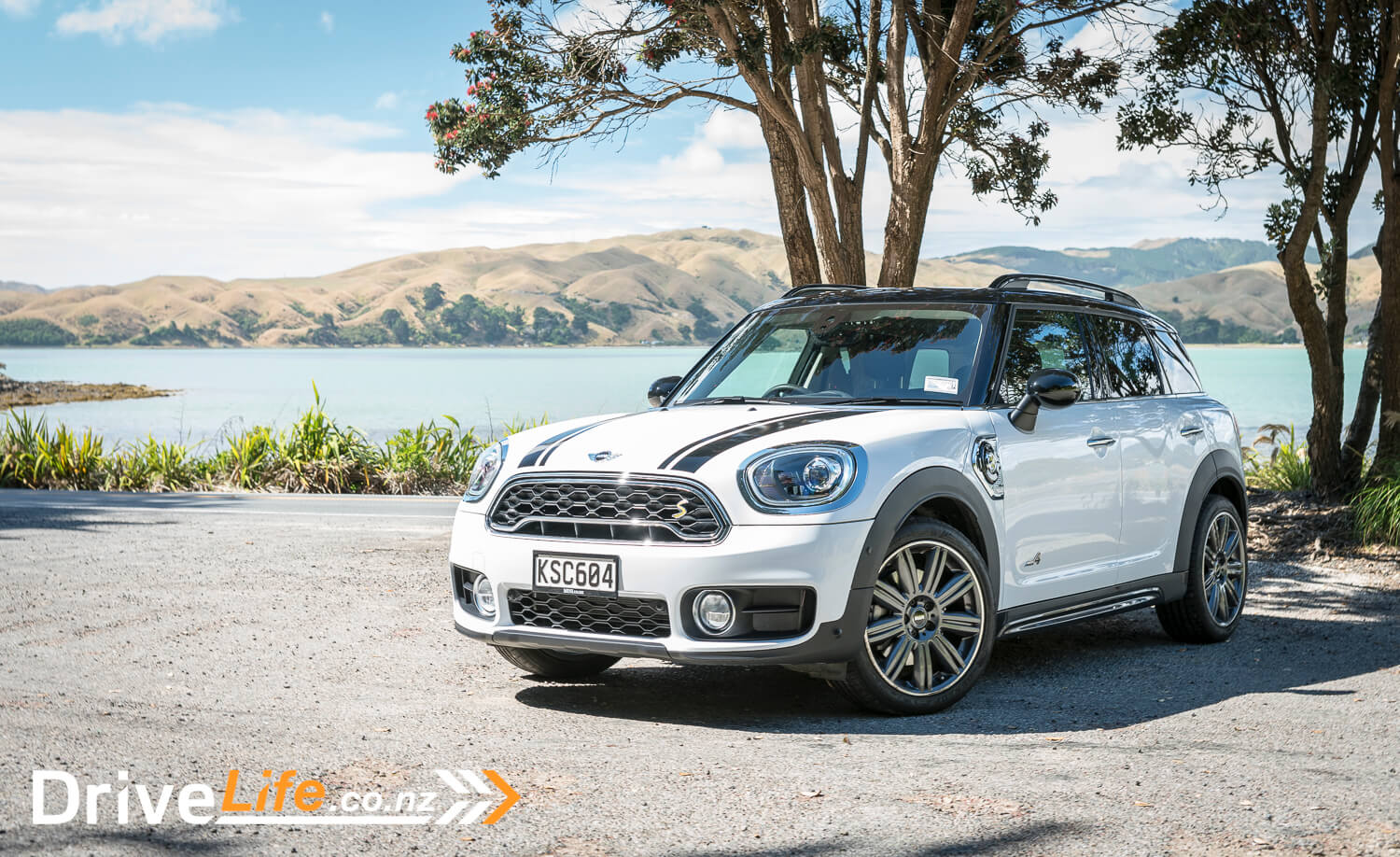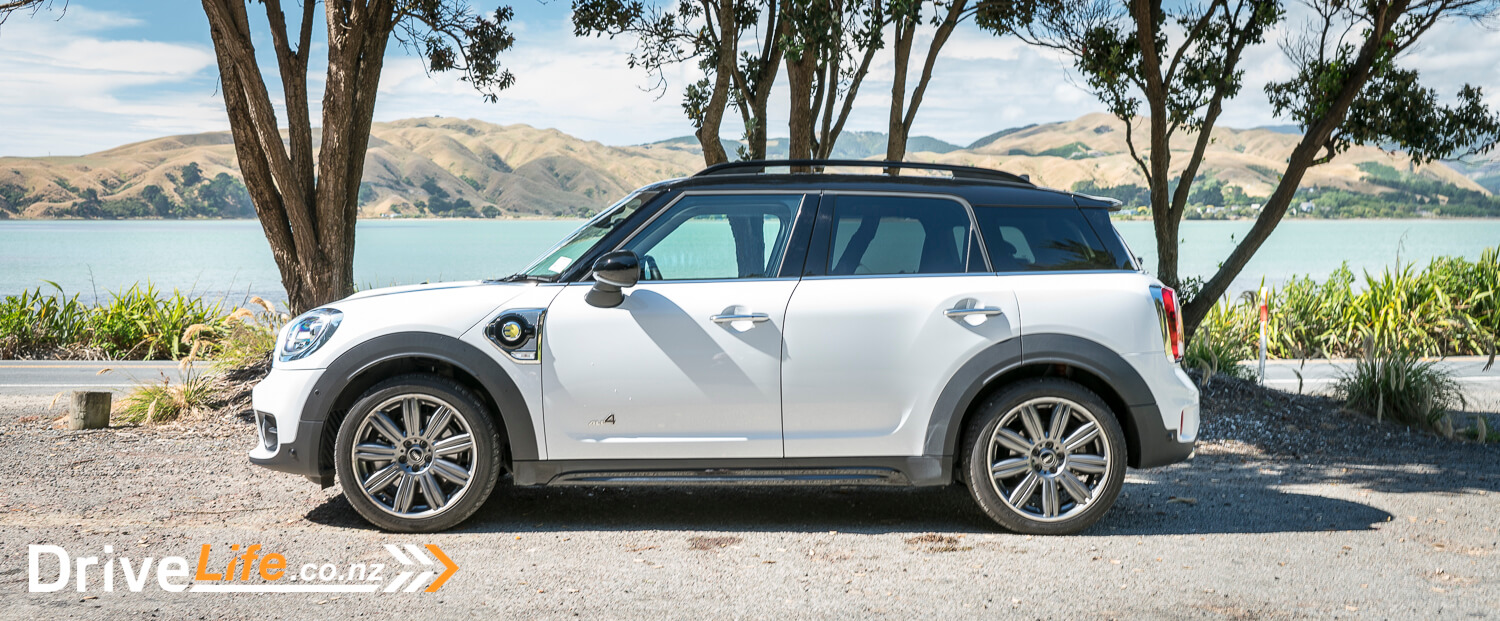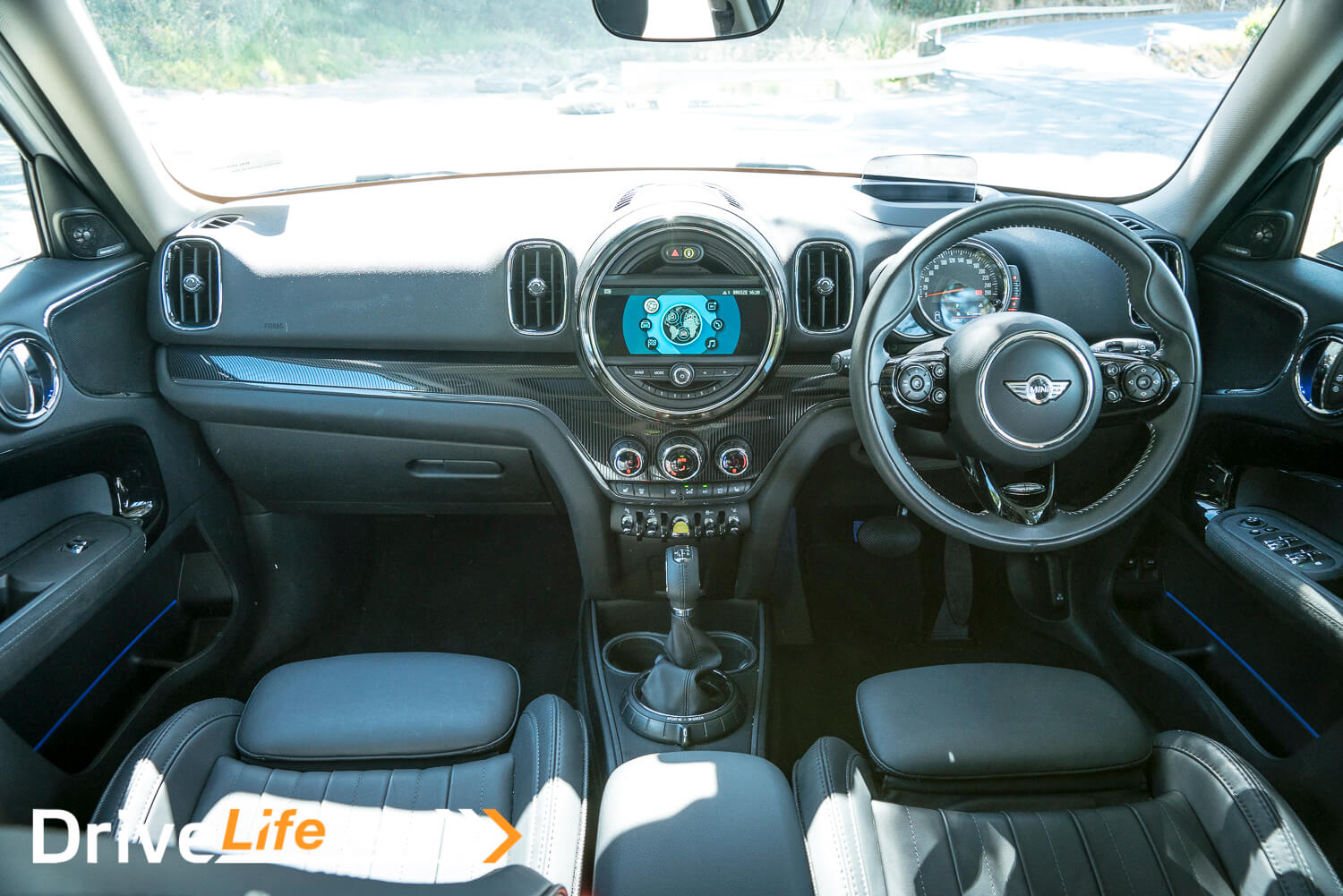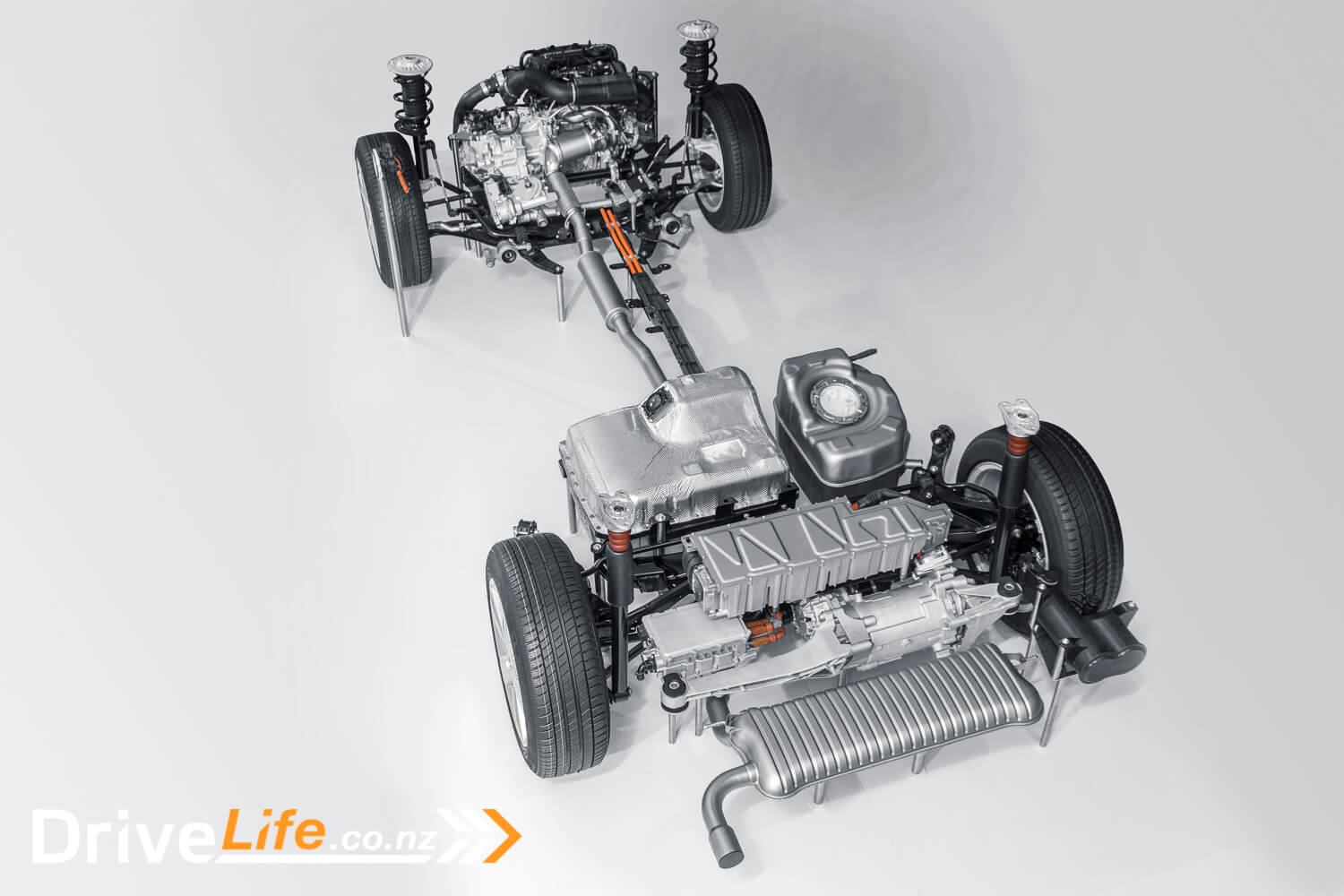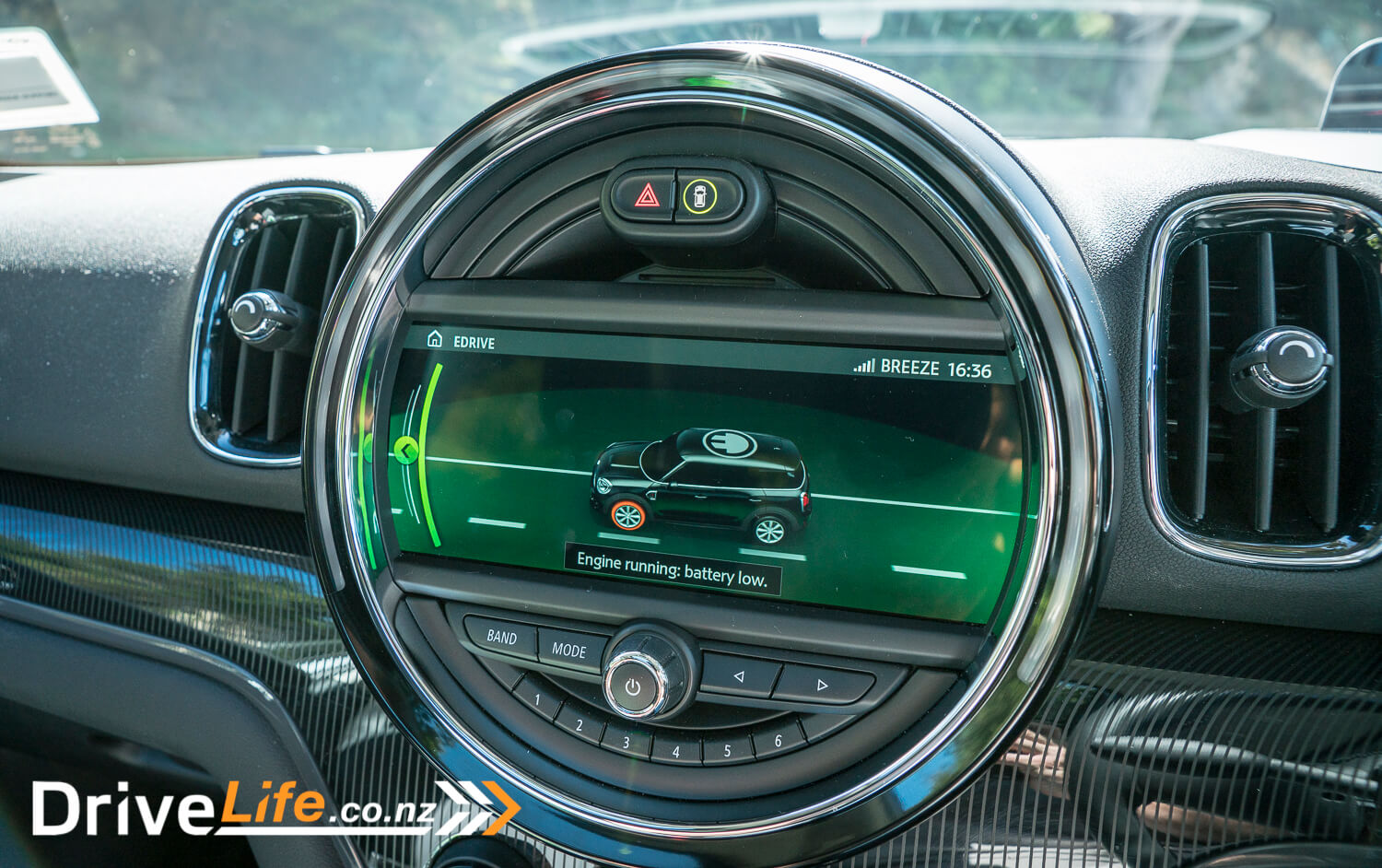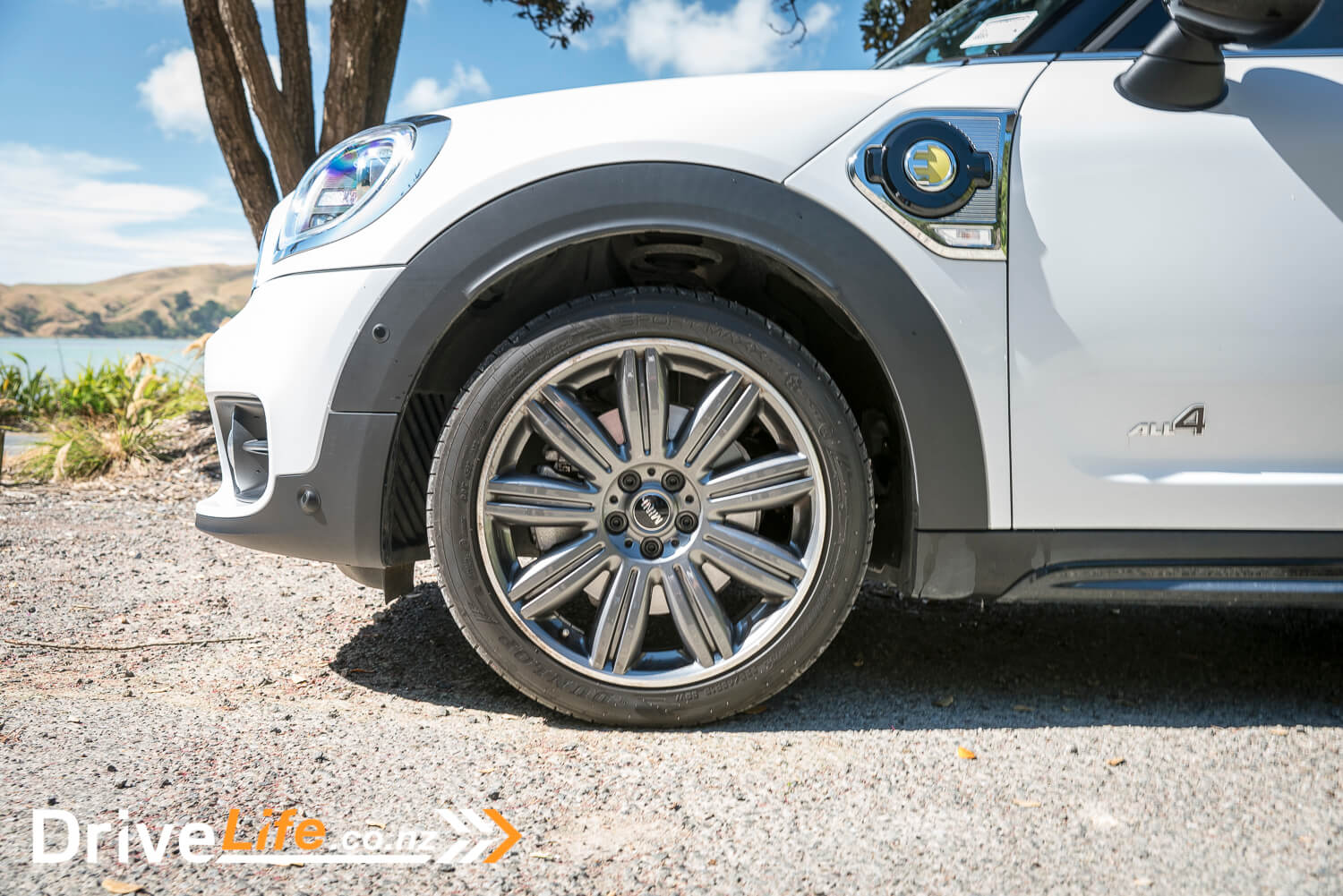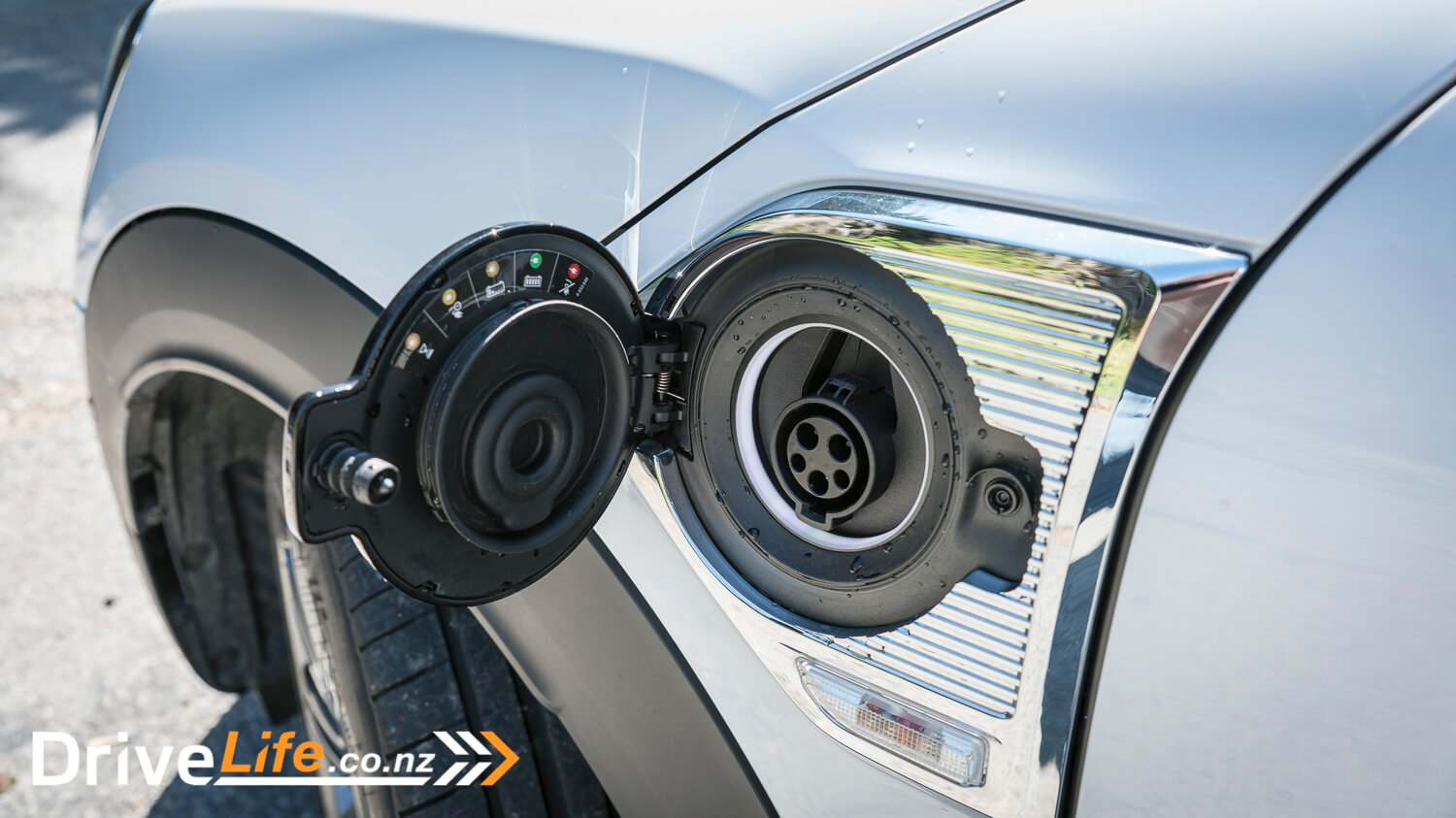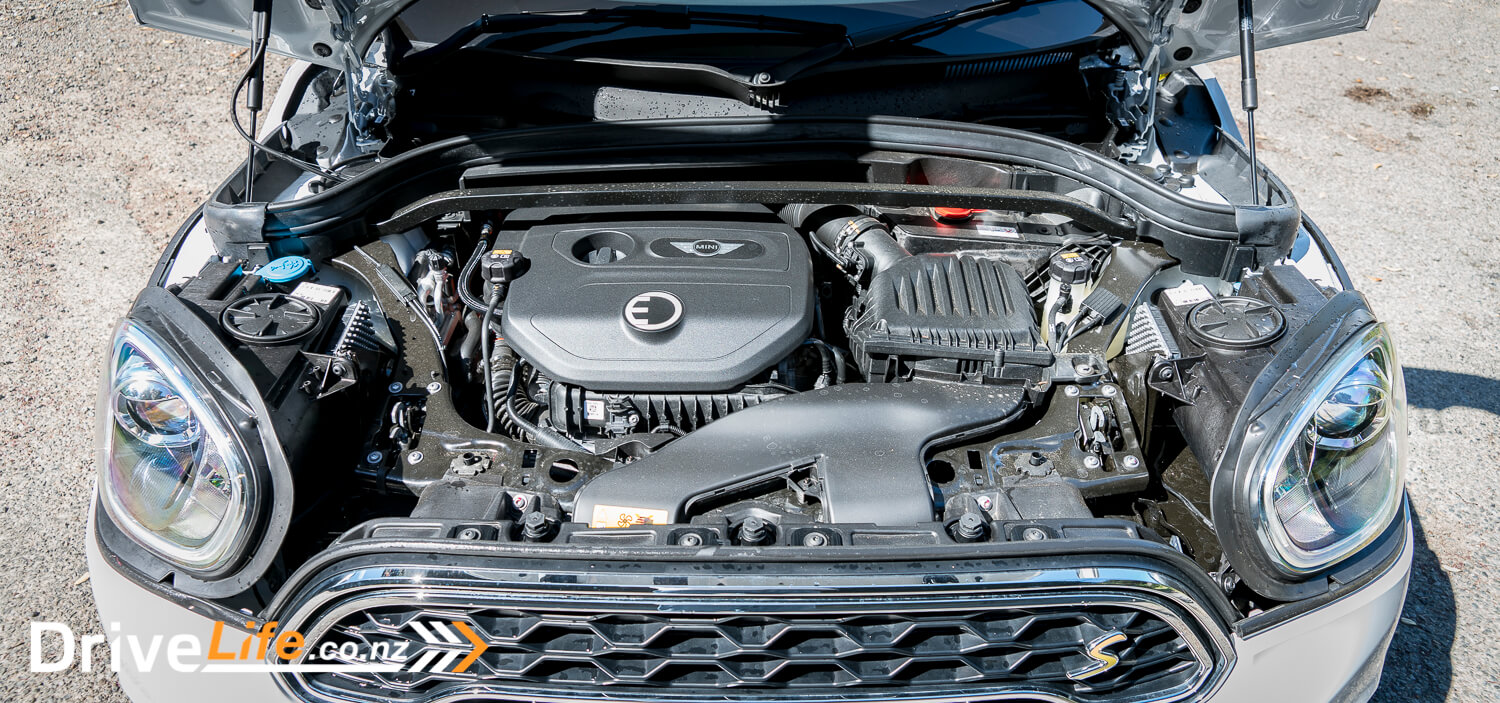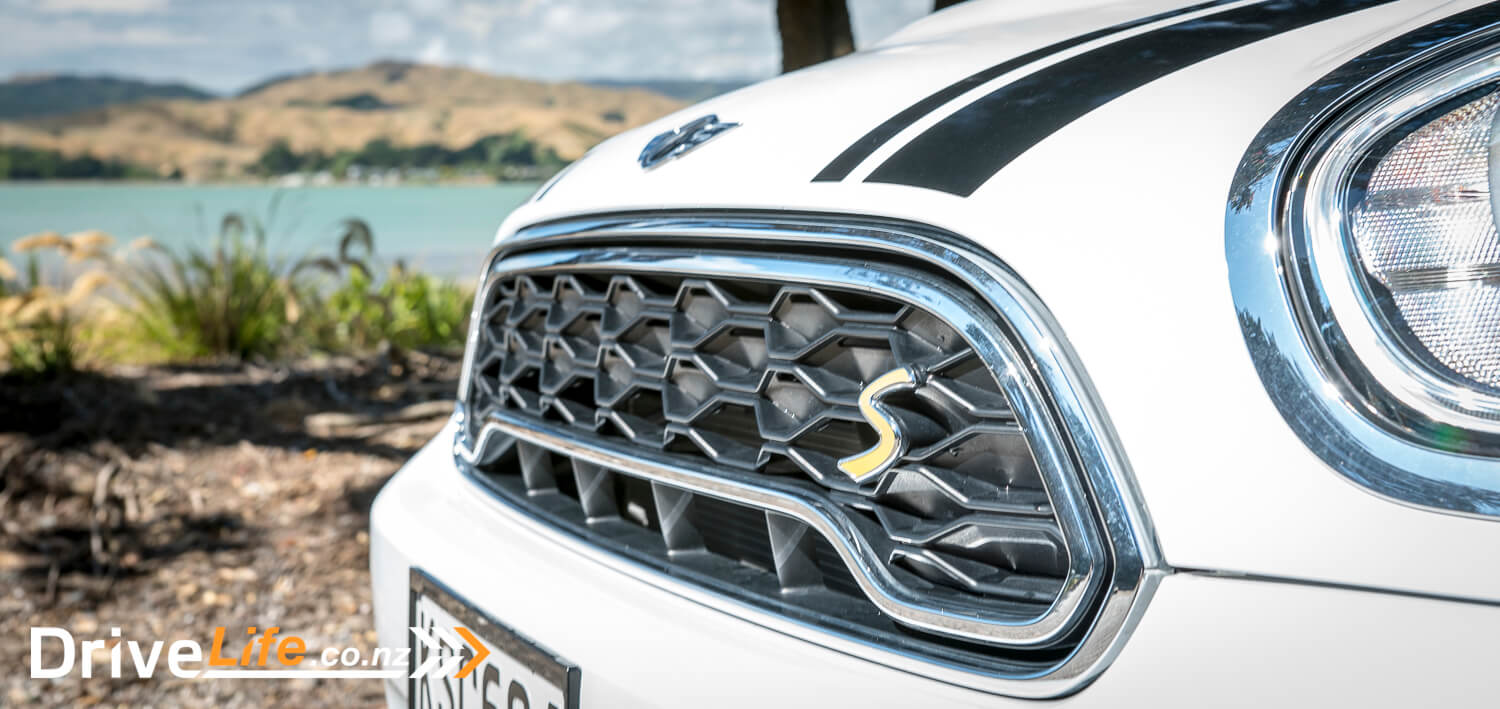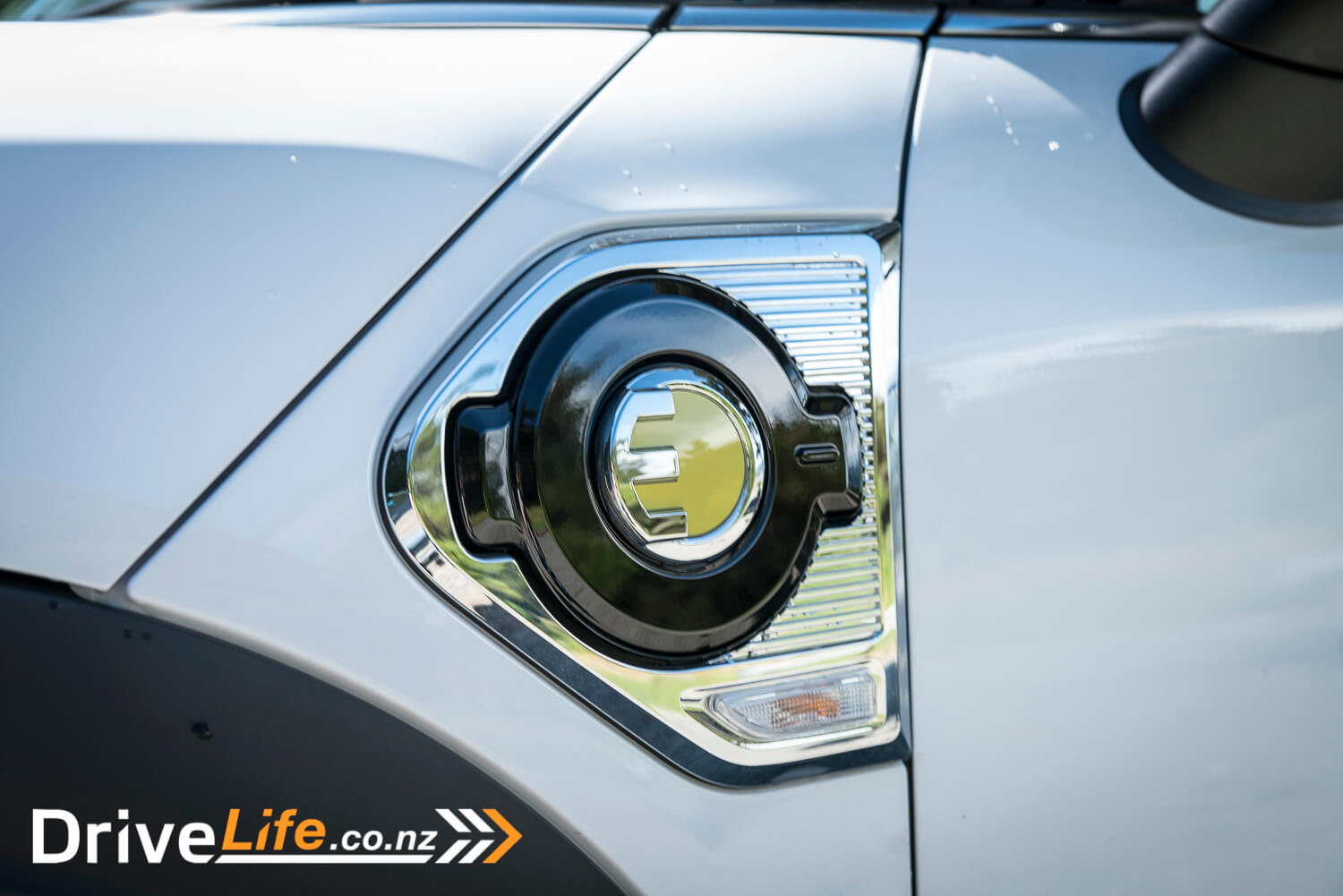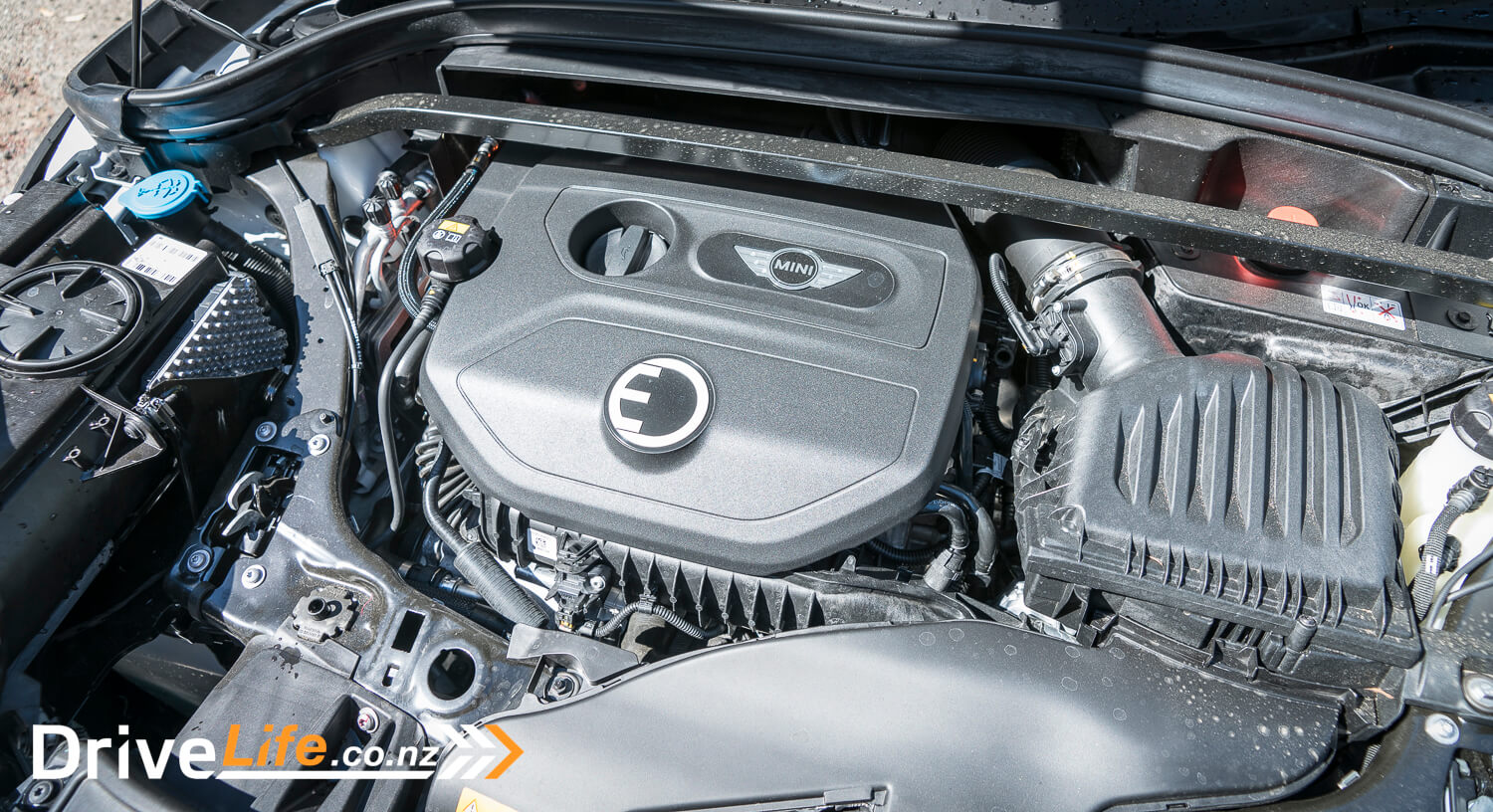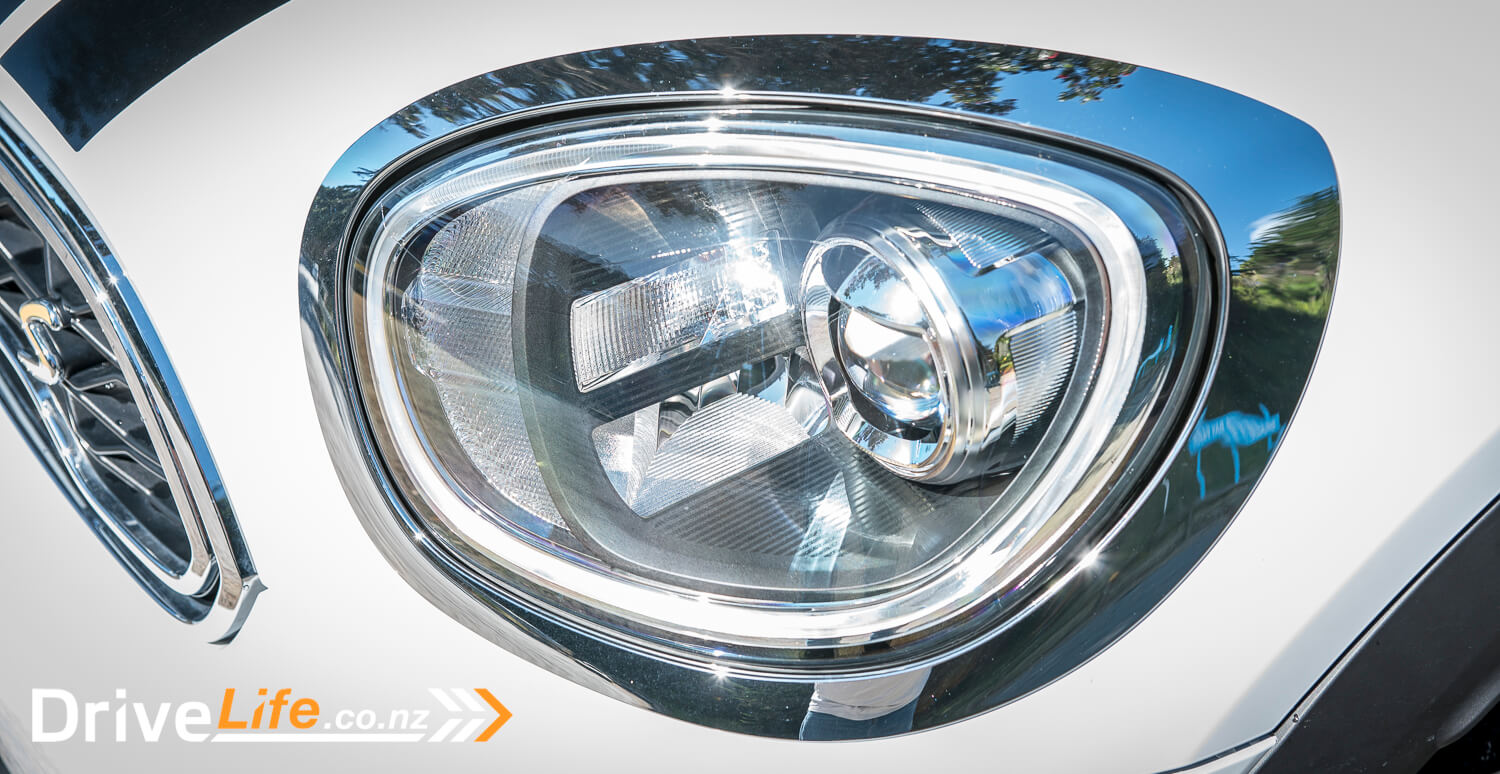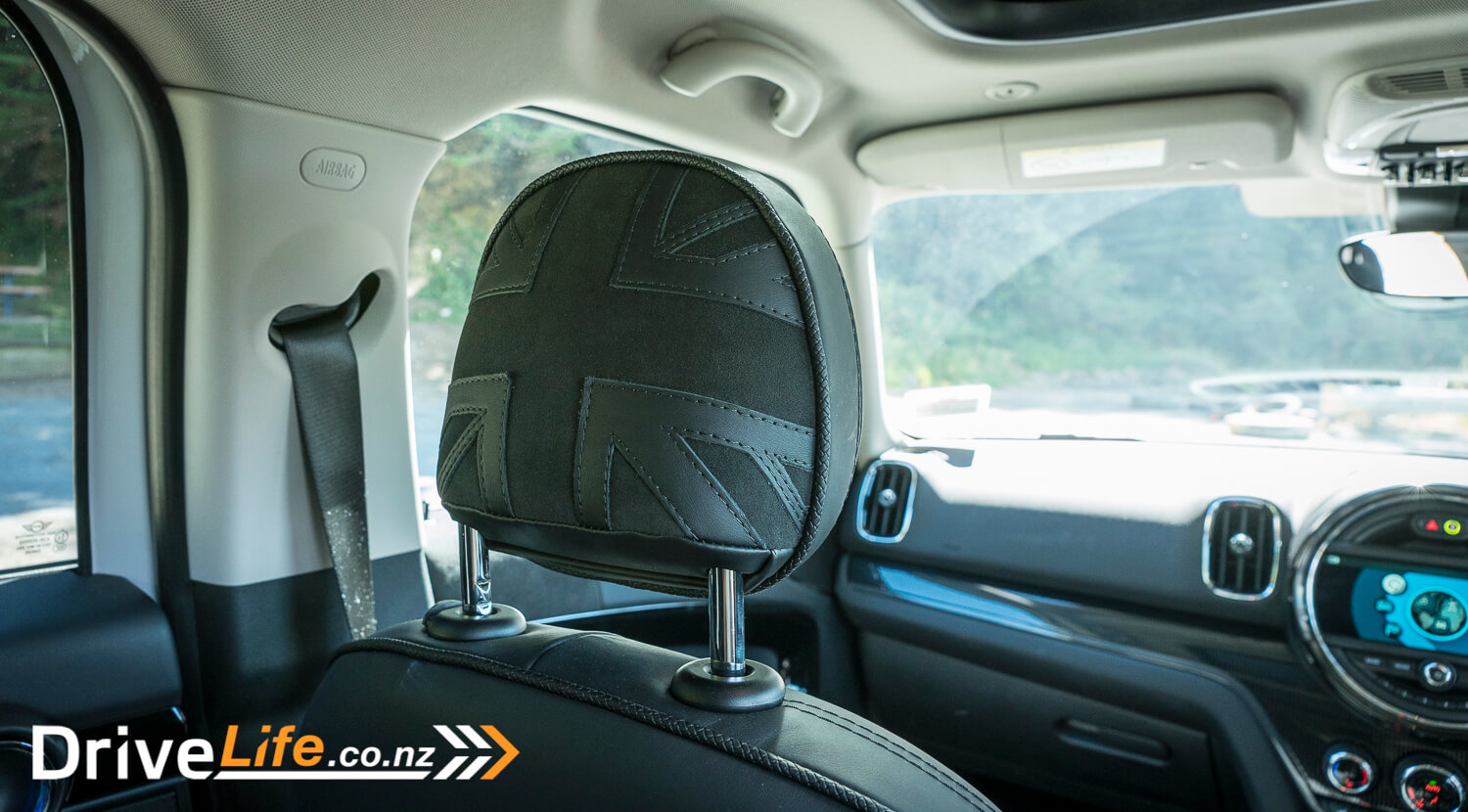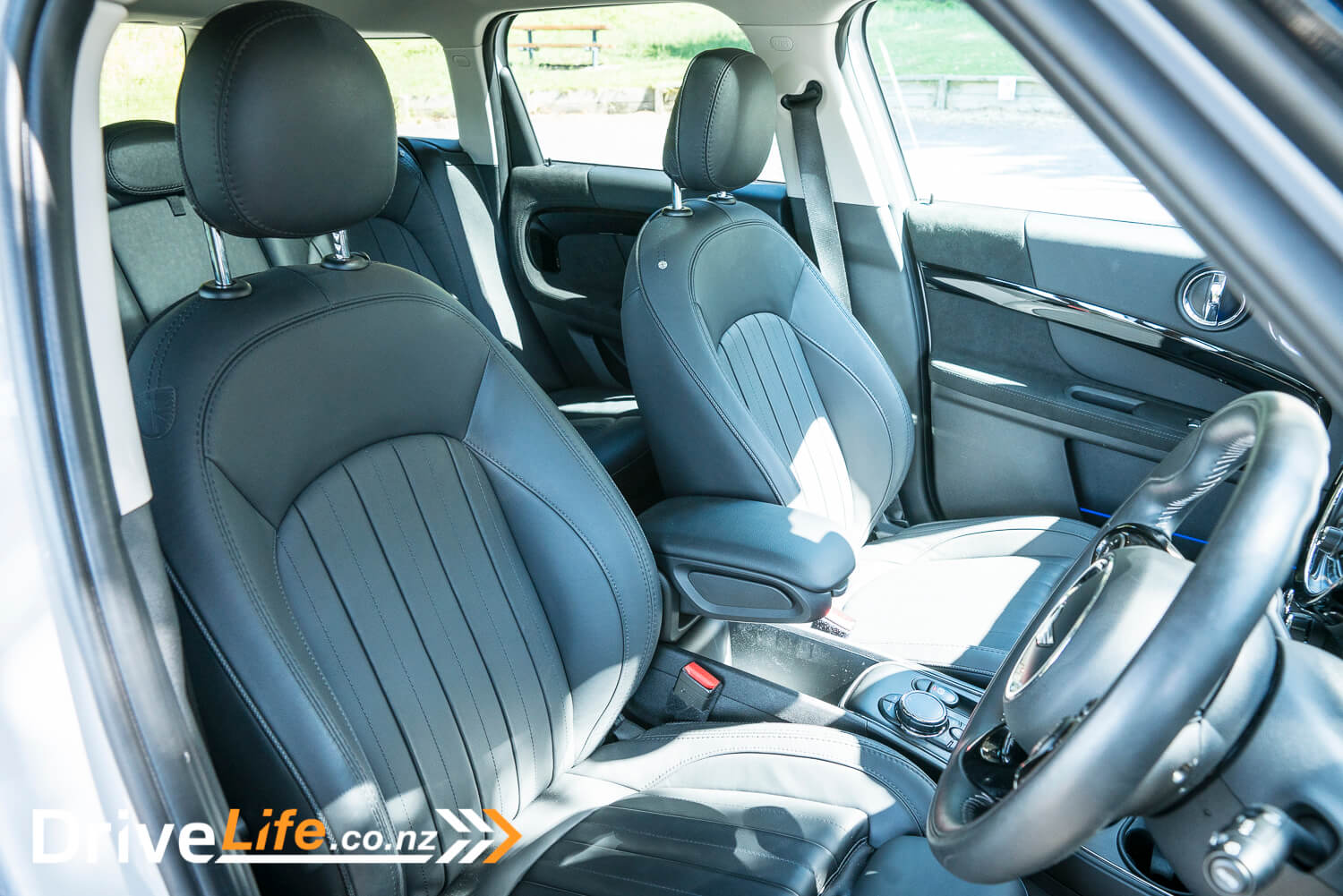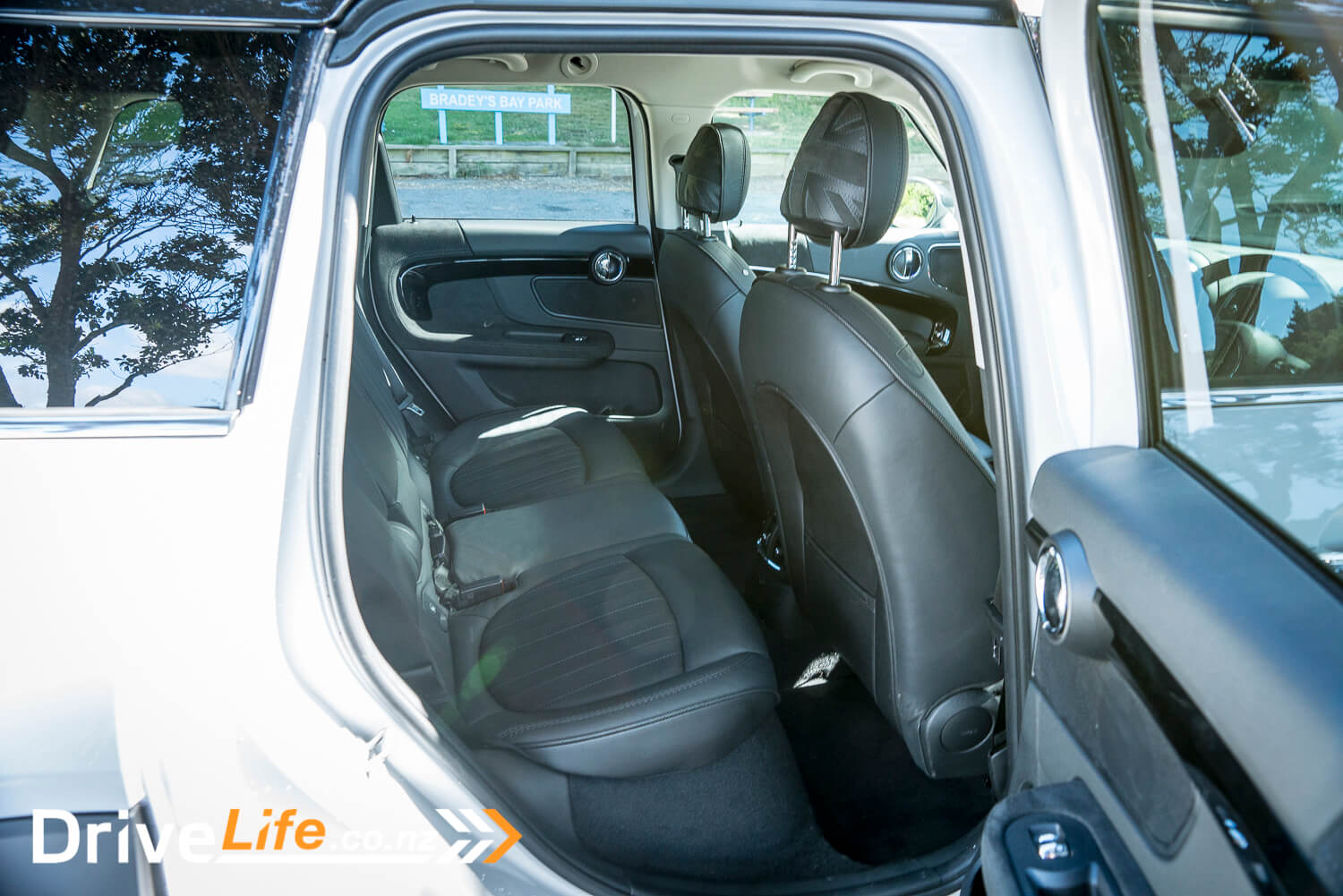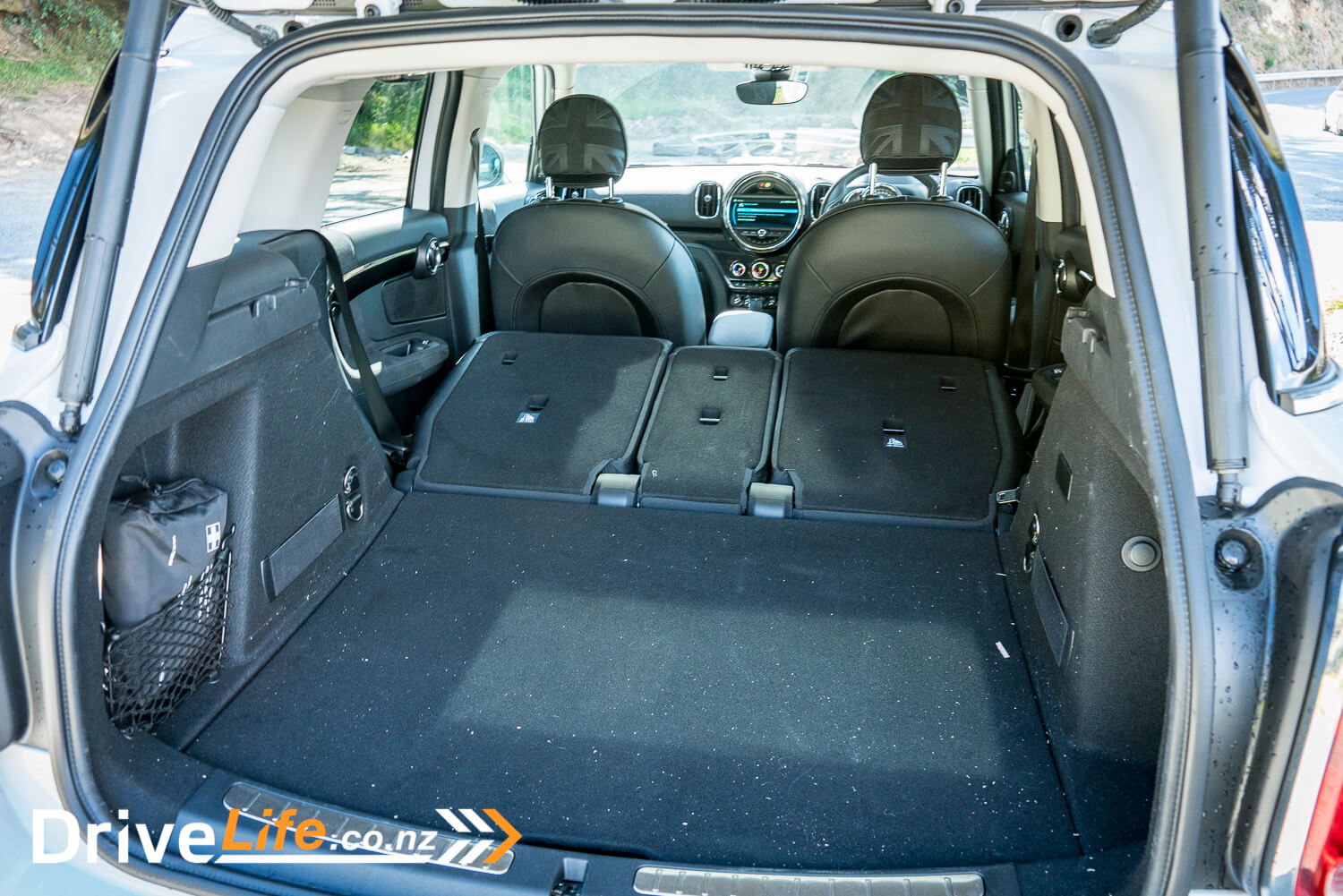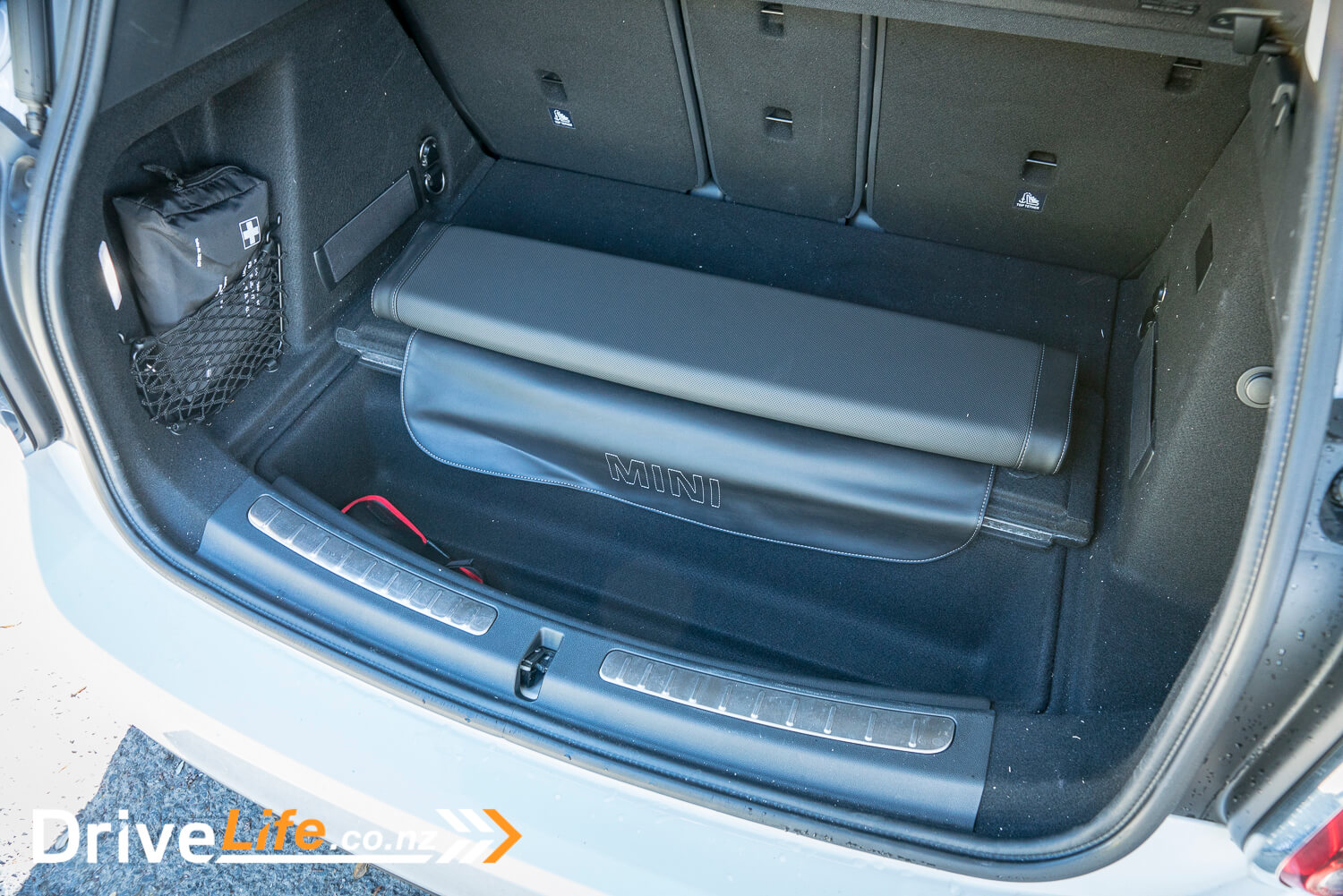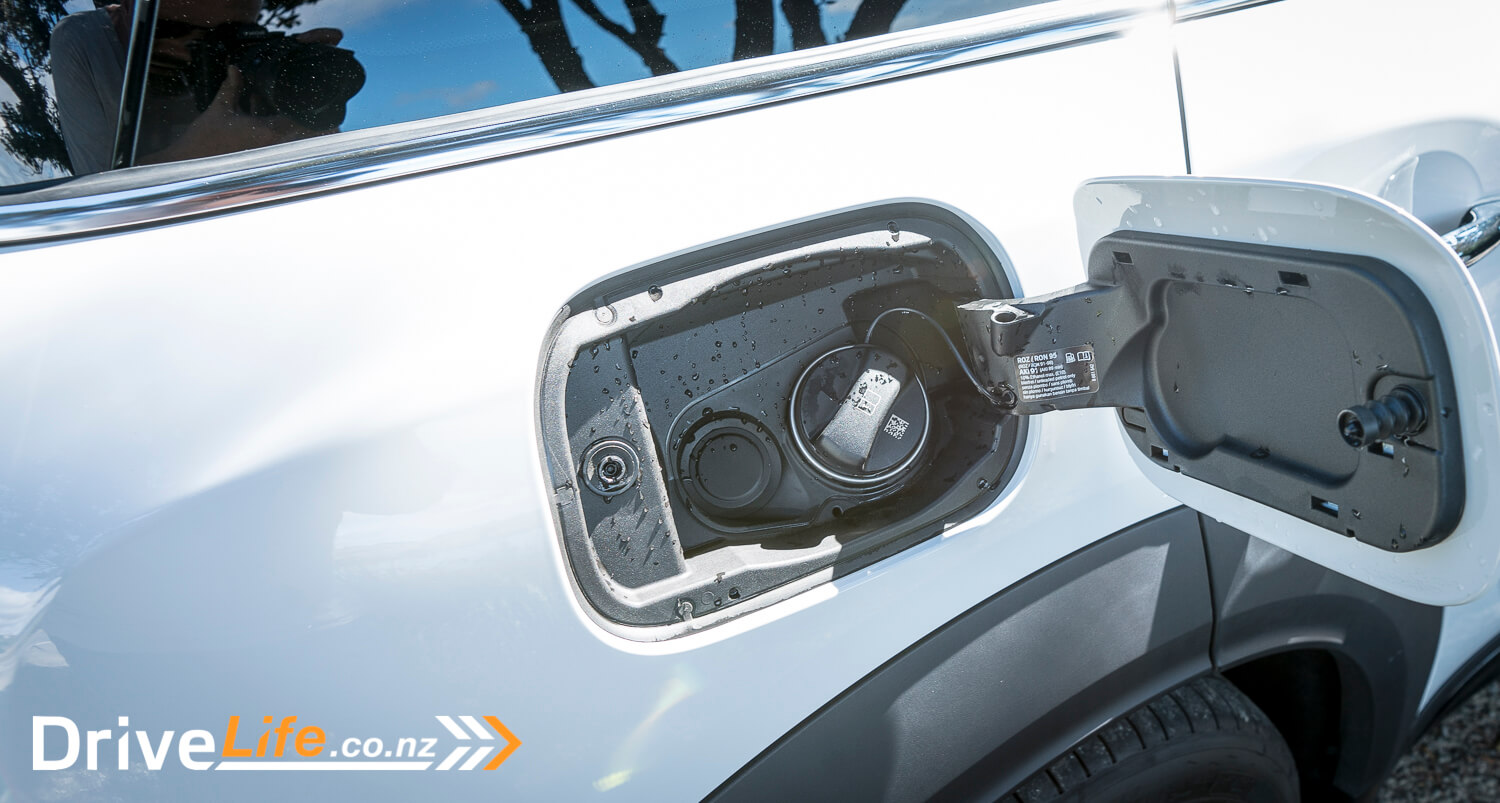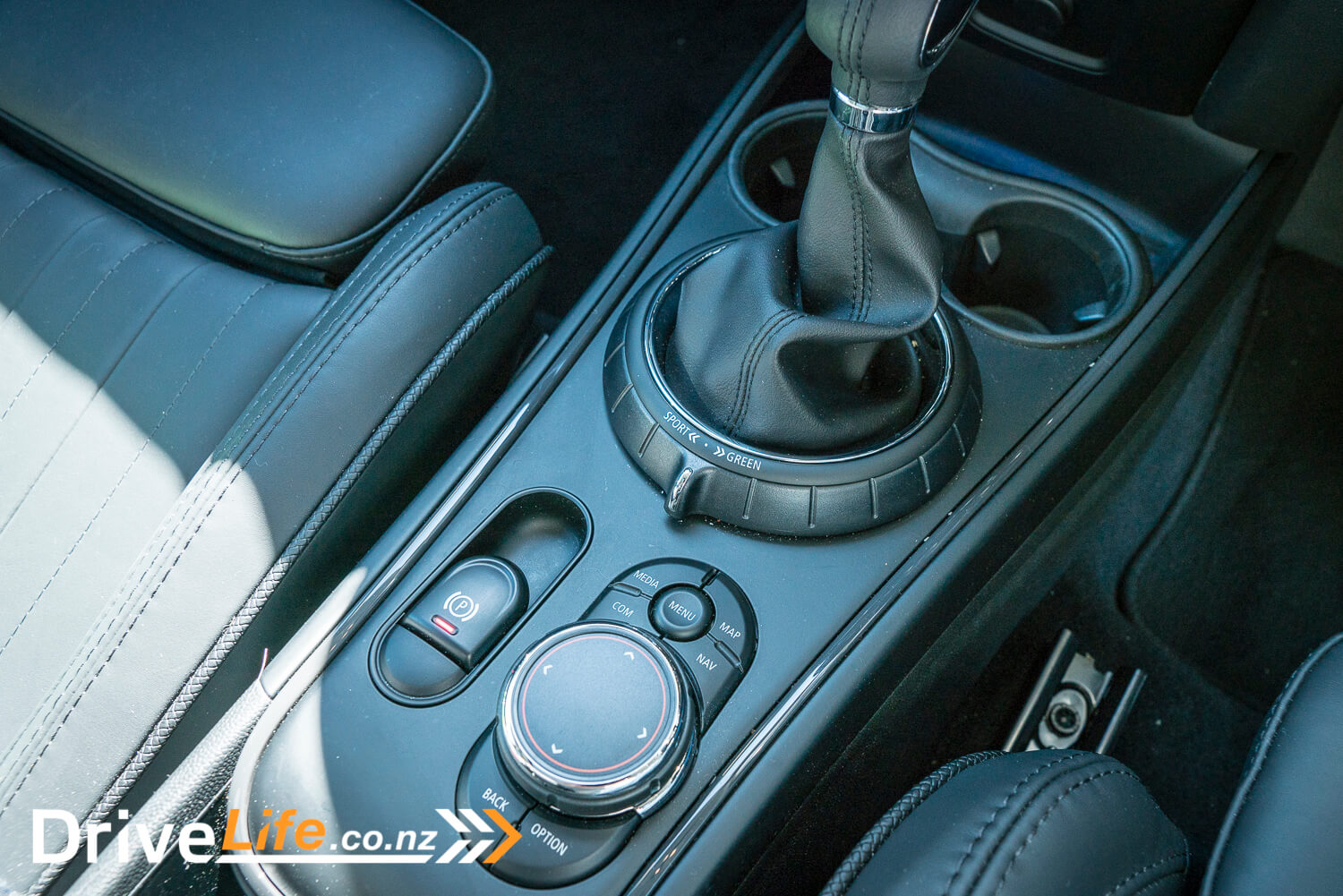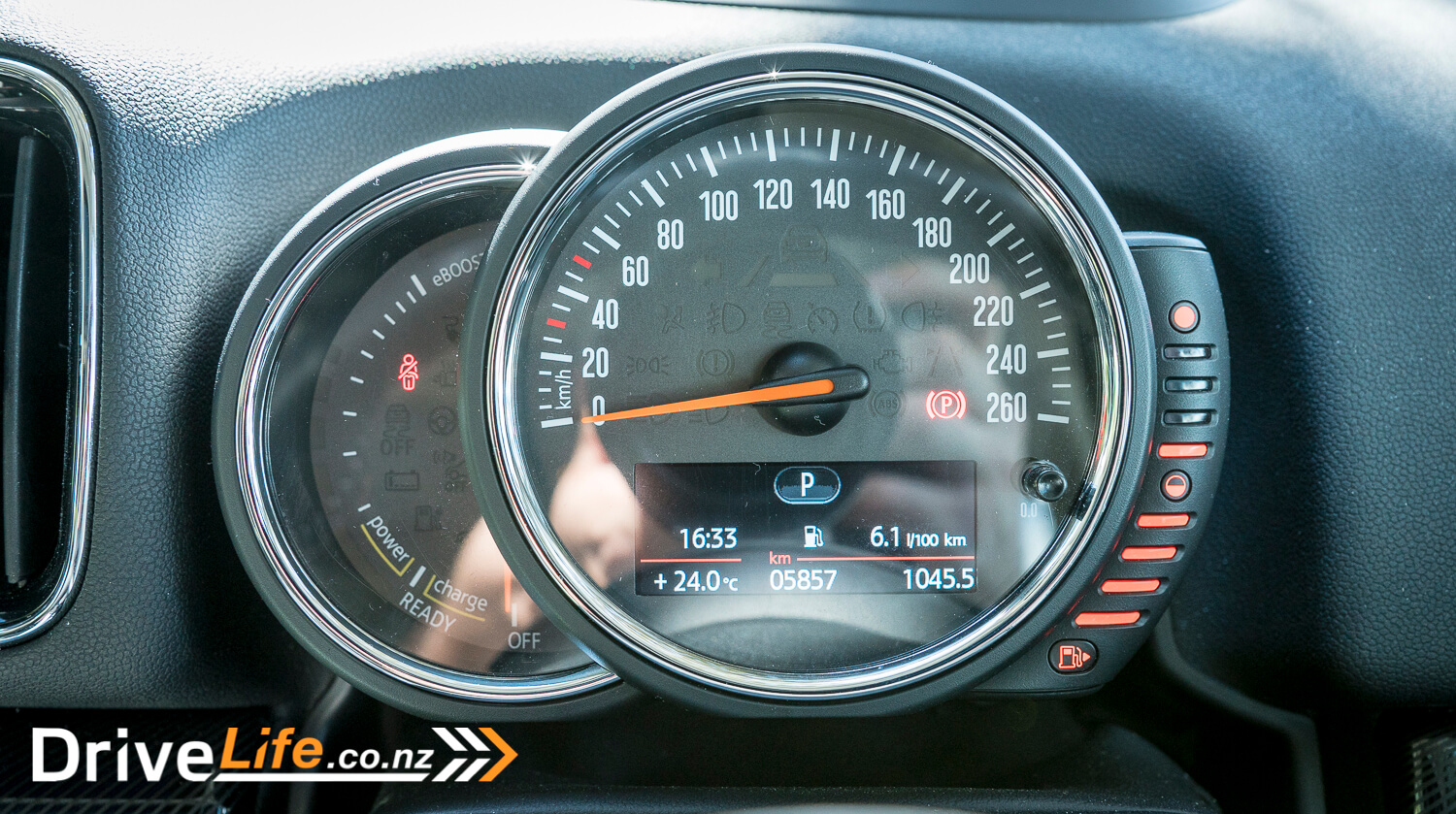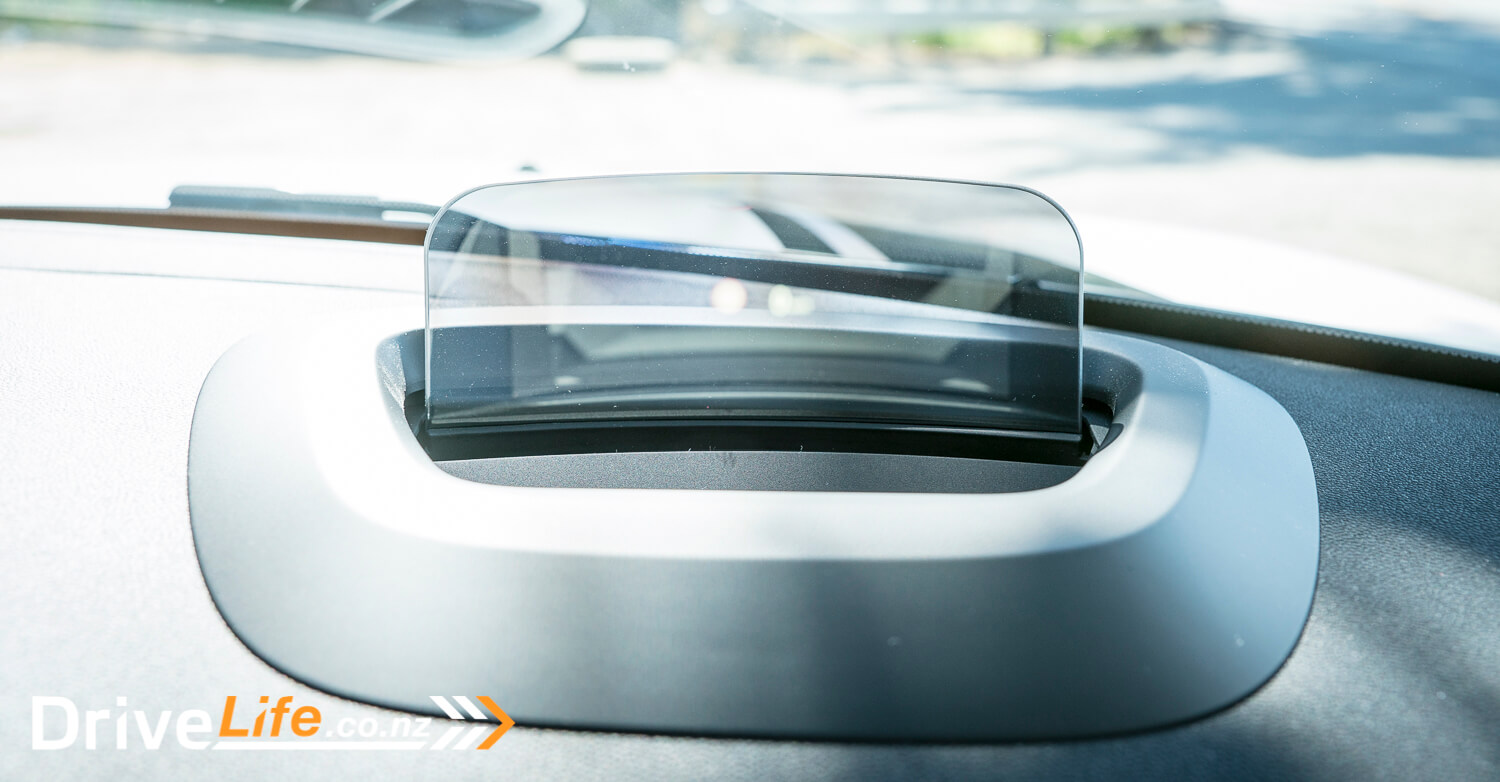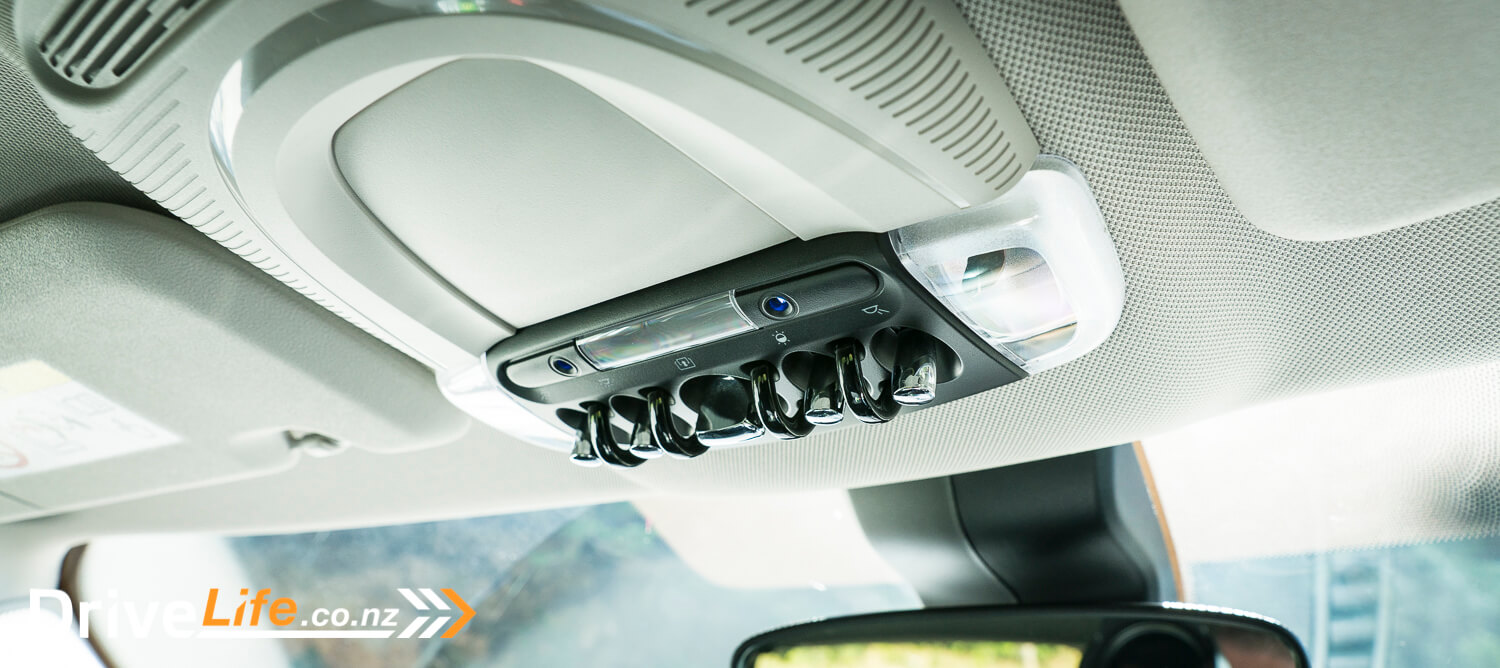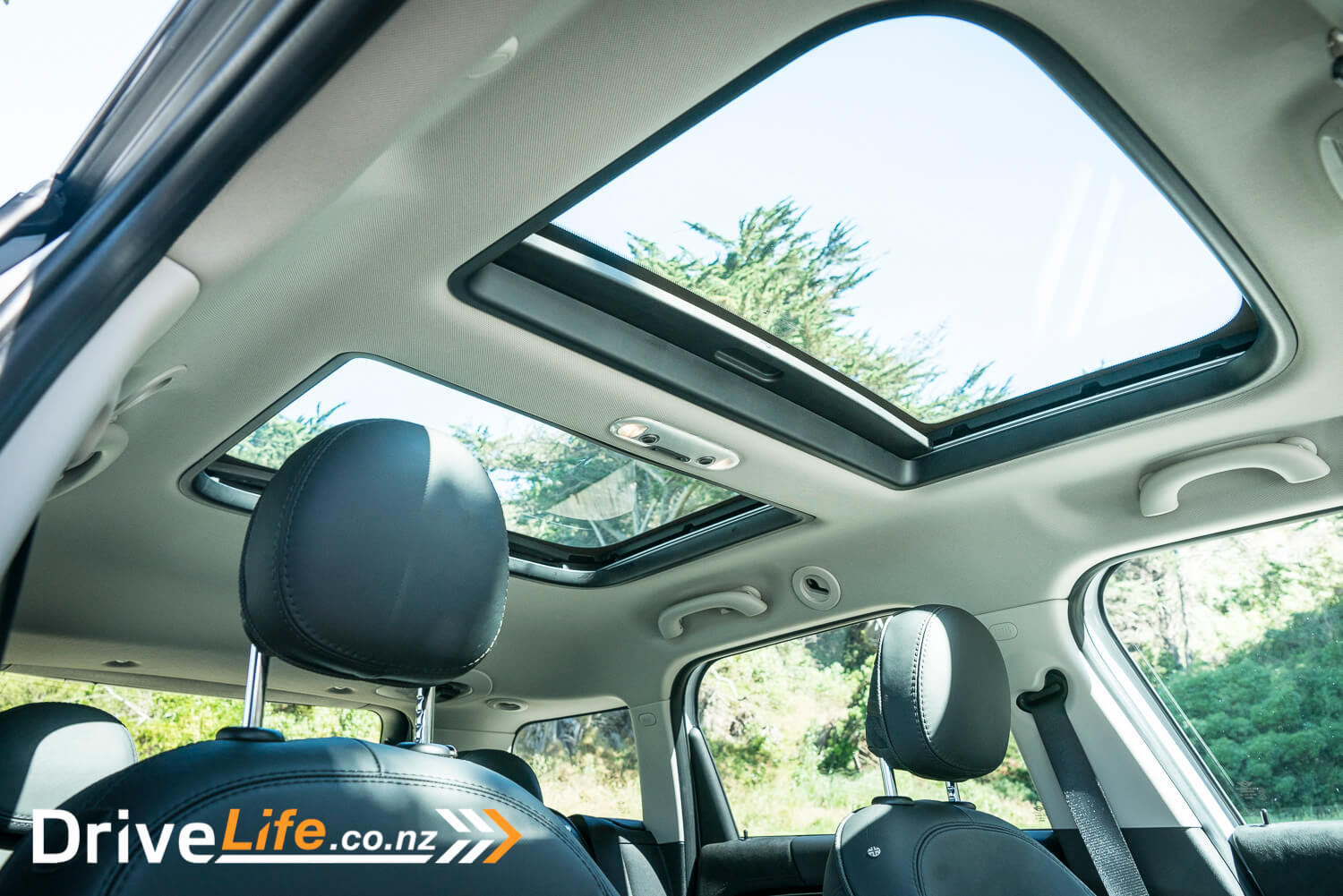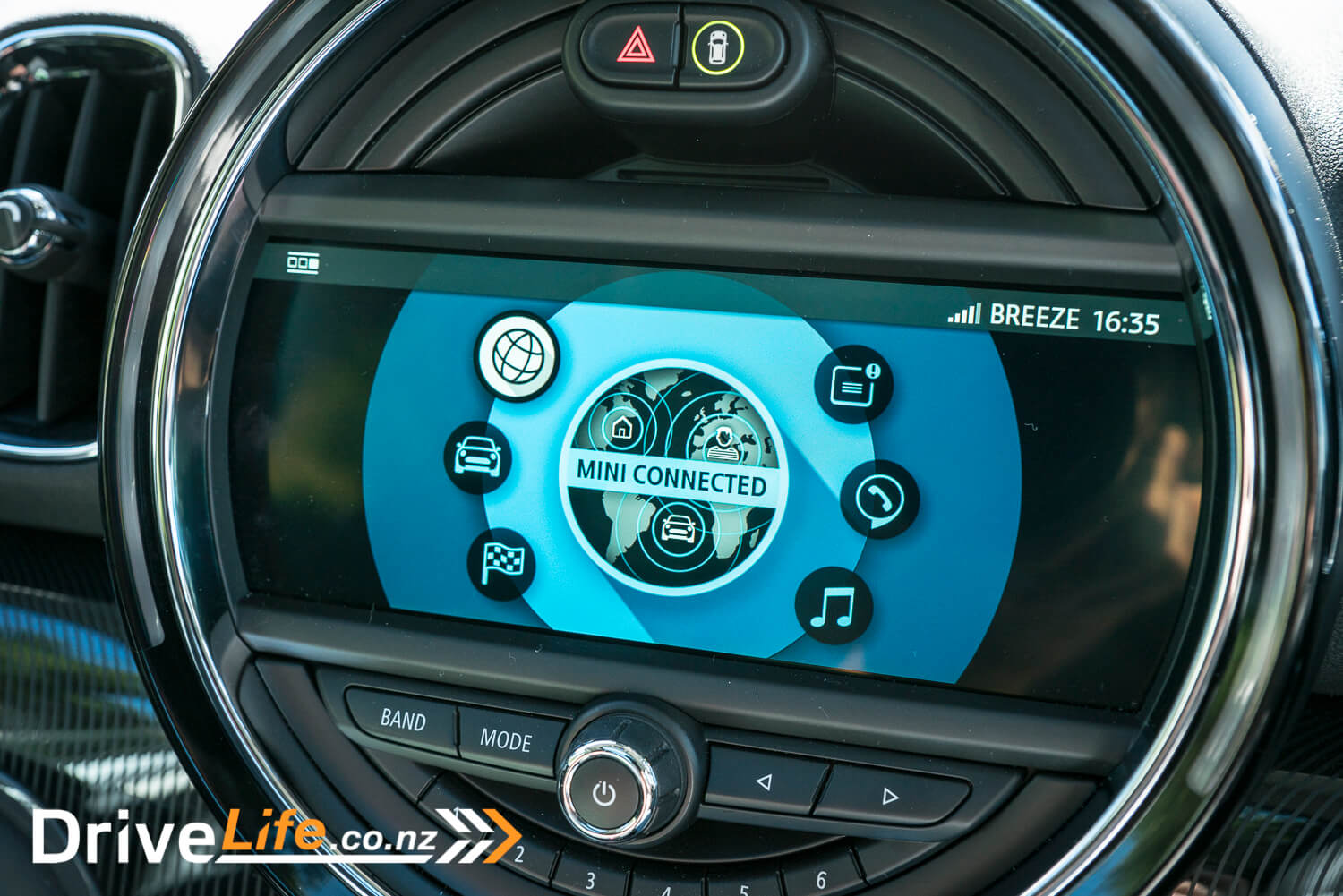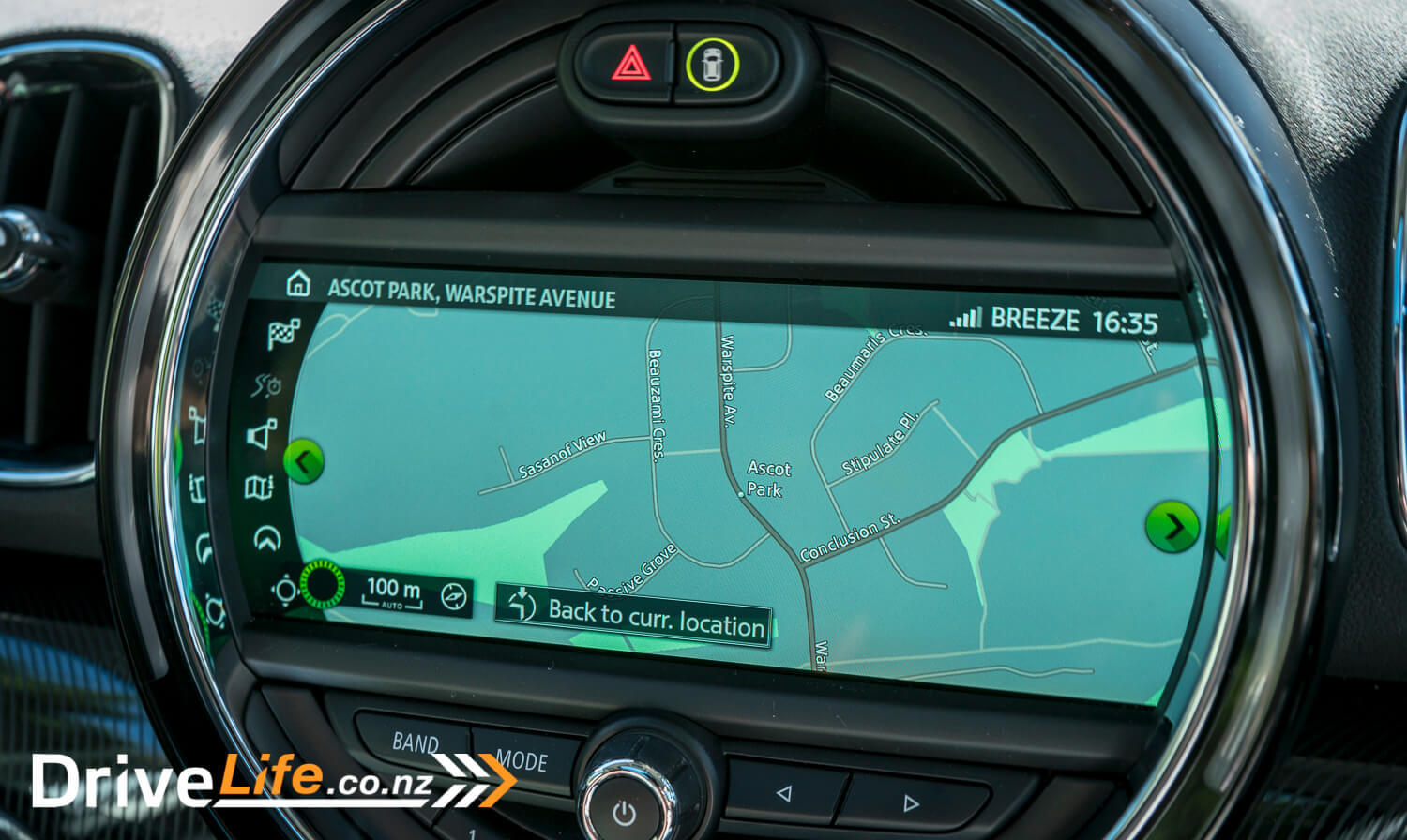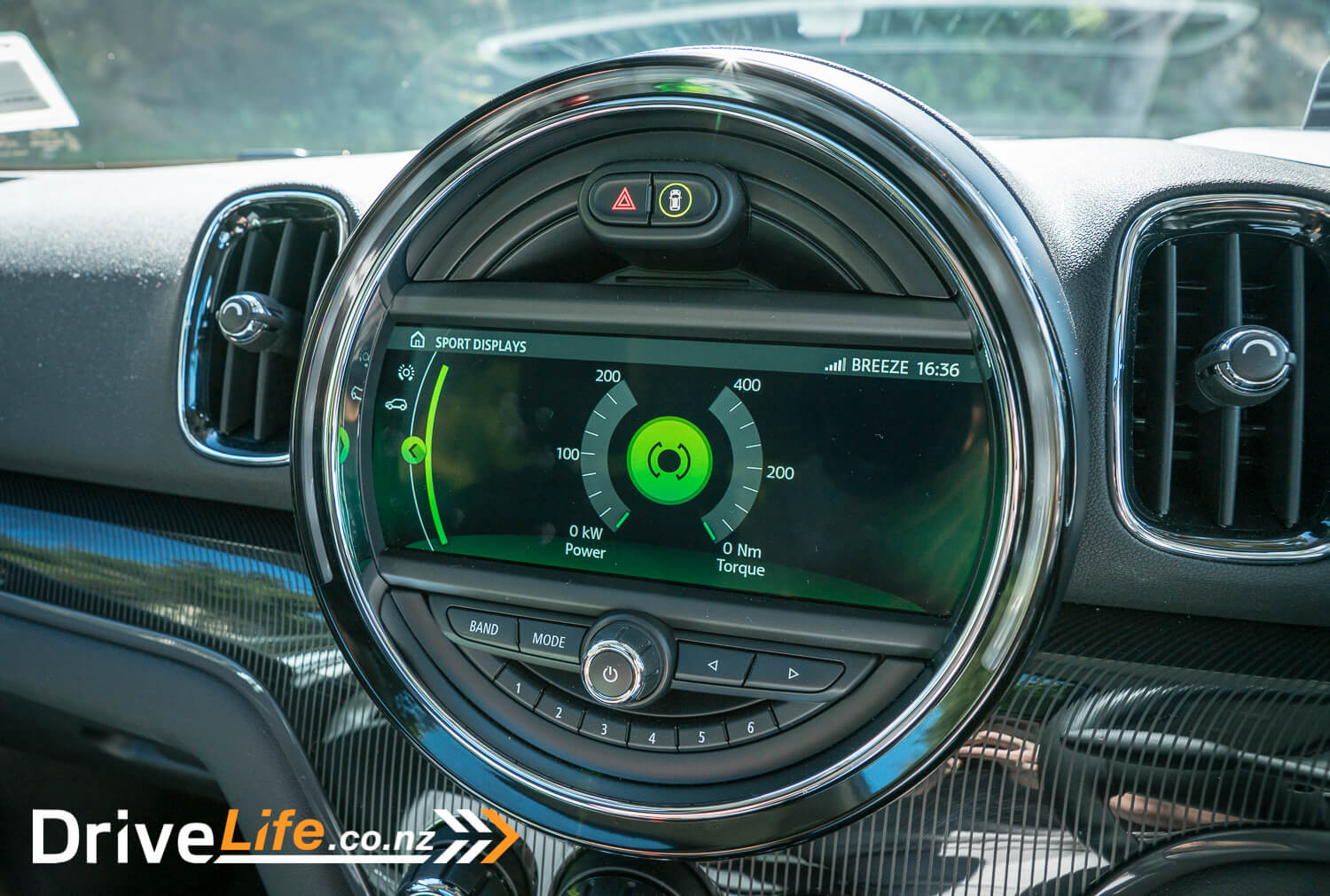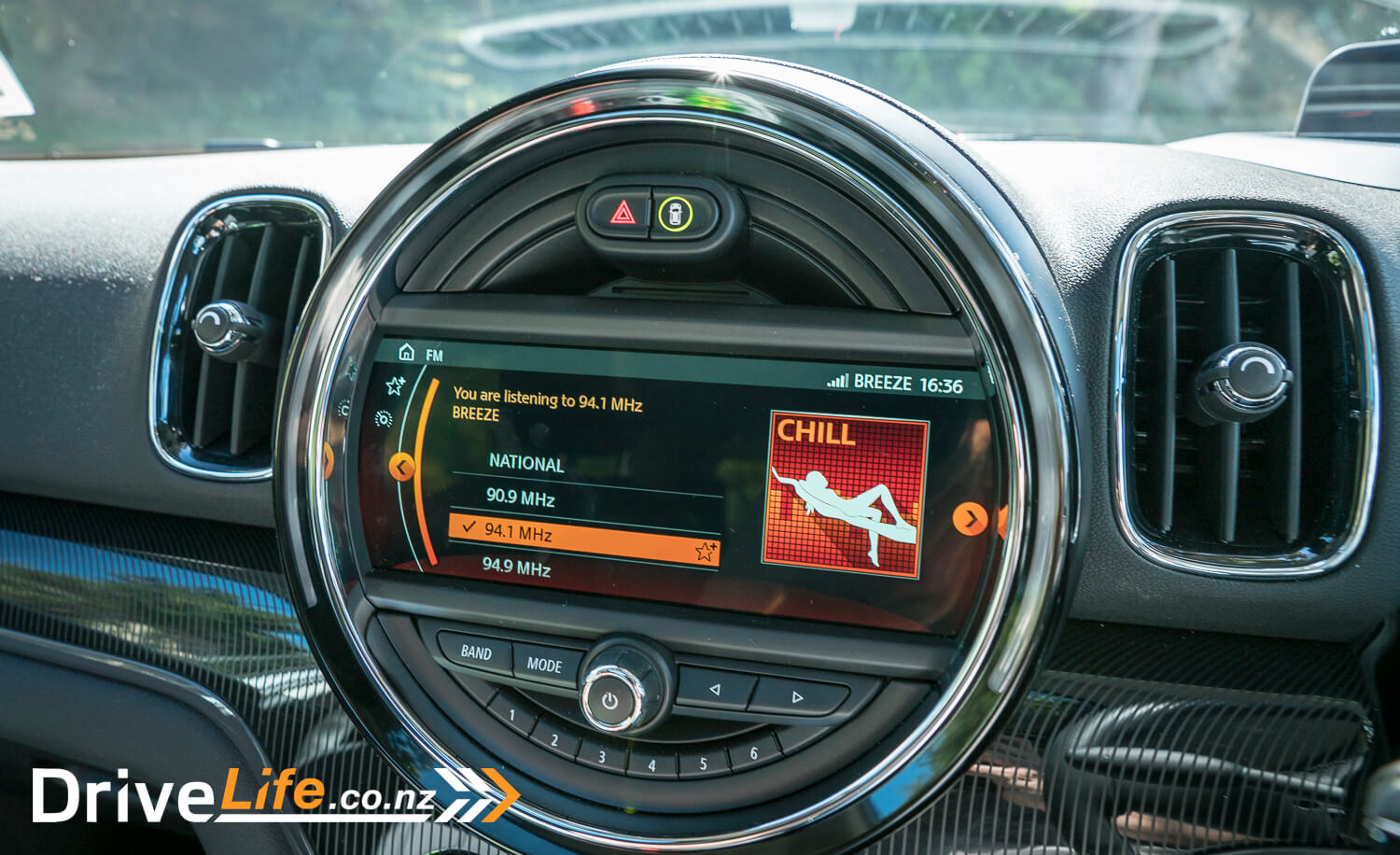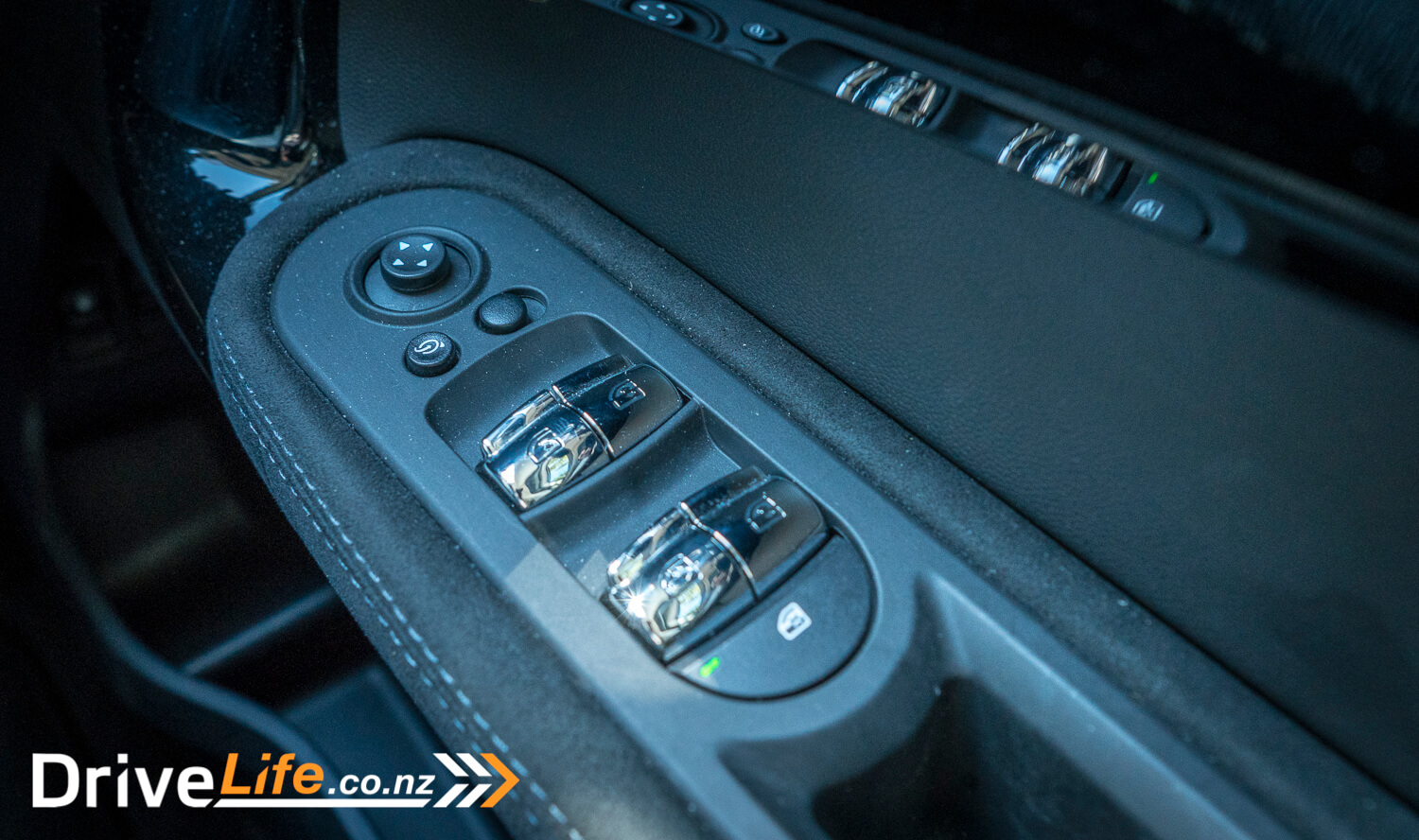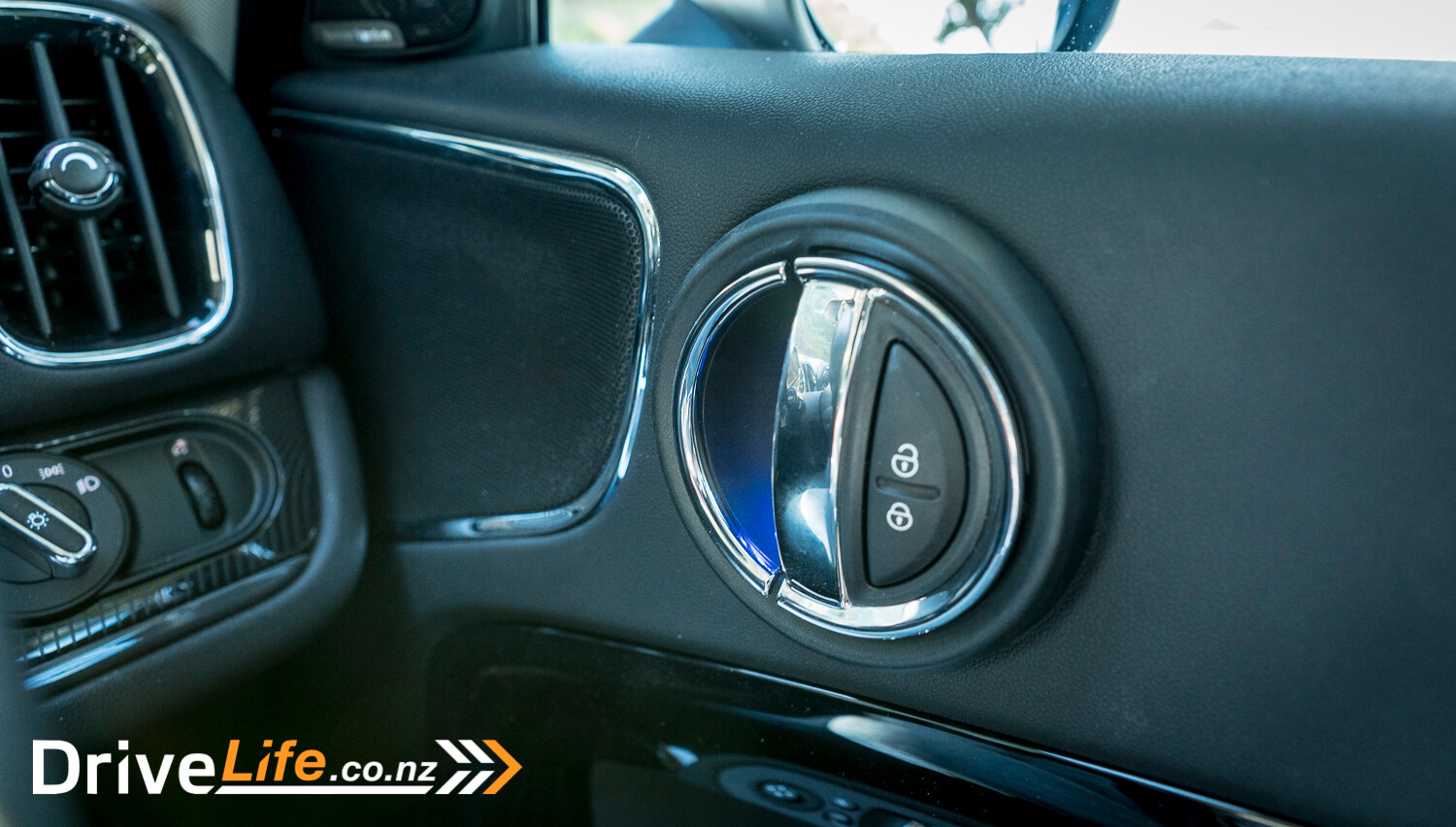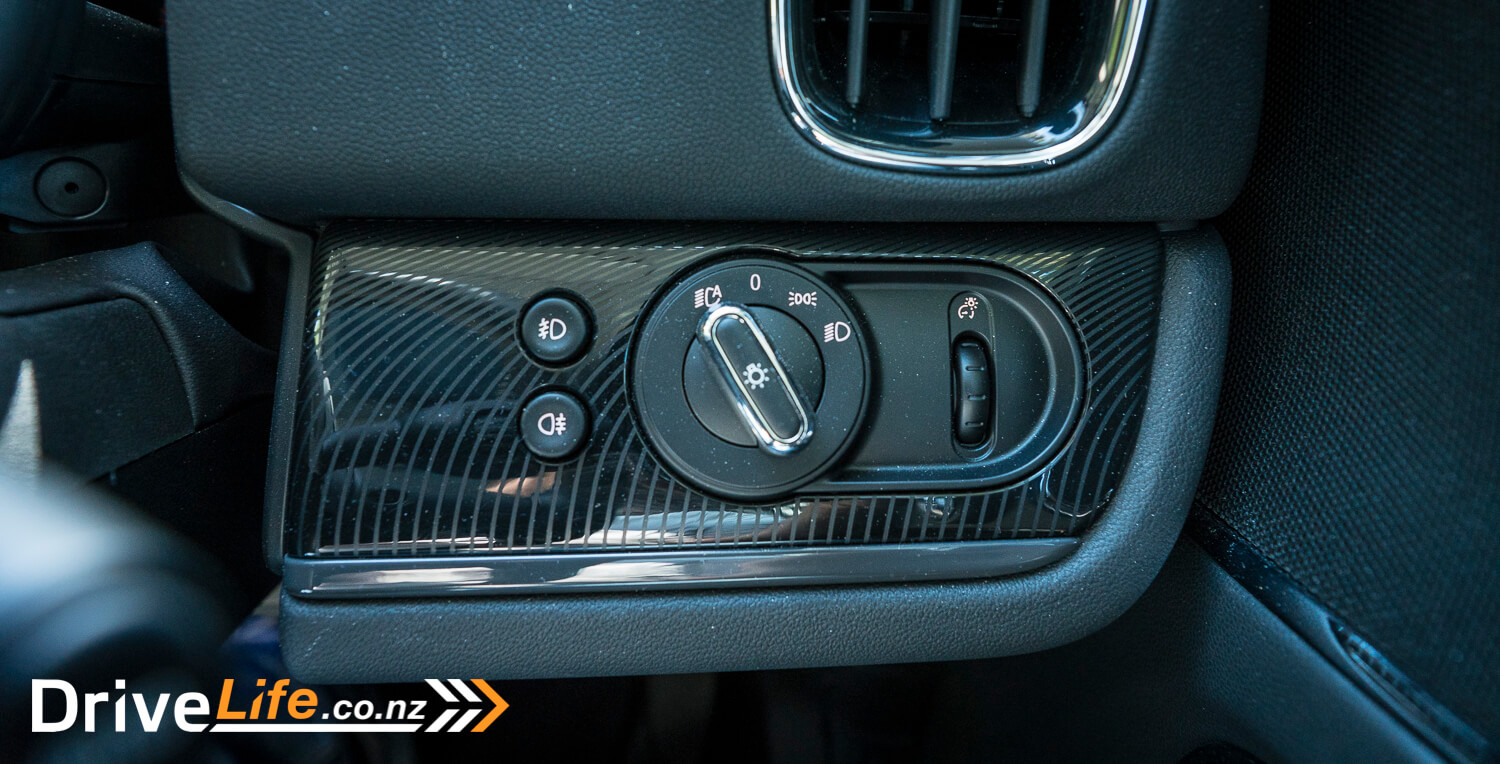Earlier this year I tested the 2017 Mini Cooper S Countryman, which I really enjoyed. Yes, it was big and many thought it just wasn’t a Mini anymore. But after spending a week with it, I found that it still embodied the Mini spirit, while being altered for practical for life in 2017. So when Mini asked if we would be keen to do a long-term test on the 2017 Mini Cooper S E ALL4 Countryman (the Electric Hybrid model), we jumped at the chance.
The Range
The Mini Cooper Countryman now comes in 5 models. The Mini Cooper Countryman ($45,750), The Mini Cooper S Countryman ($53,890) and The Mini Cooper S All4 Countryman ($56,890). Since we tested the Mini Cooper S Countryman, two more models have been added to the lineup. The Cooper S E ALL4 Countryman ($59,900) and Mini John Cooper Works Countryman ($71,900).
For the international market, the first 3 models available in New Zealand also come in diesel variants. They are not listed on the official Mini New Zealand website, but when I asked about them, Mini New Zealand responded with: “Traditionally, customer demand in MINI product has favored petrol variants over diesel. Across the market, in general, we are seeing a shift towards petrol, especially in passenger vehicles. However, if a customer particularly wanted a MINI diesel, then we would certainly look at ways to support this.”
The Mini Cooper Countryman comes with a 1.5L MINI Twinpower Turbo 3-cylinder petrol engine. This engine produces 100kW of power and 220Nm of torque. Both the Mini Cooper S and All4 Countryman come with a 2.0L MINI Twinpower Turbo 4-cylinder petrol engine. This engine produces 141kW of power and 280Nm of torque. The Mini Cooper S E comes with a hybrid electric powertrain. 1.5L turbo 3-cylinder which drives the front wheel, and electric motors which drive the rear wheels. Combined they produce 165kW of power and 385Nm of torque. And finally, we have the Mini John Cooper Works Countryman, which has the 2.0L MINI Twinpower Turbo 4-cylinder petrol engine. It produces 170kW of power and 350Nm of torque.
You might want to sit down for this one. This Mini is heavily spec’d out with $20,900 worth of optional extras. We have 19” MINI Yours Masterpiece Spoke Spectre Grey alloy wheels ($3000 normally, $2000 with Chili package), black roof rails ($350), black bonnet stripes ($250), chrome line interior ($300), chrome line exterior ($300), roof and mirror caps in black (NCO), picnic bench ($250), MINI Yours Interior Style Piano Black ($750), panorama glass sunroof ($2000), sun protection glazing ($650), seat adjustment electric with memory ($2000), seat heating for driver and front passenger ($600), MINI heads-up display ($1000), Wired package ($2700), Chili package ($5000) Metallic paint: Light White (NCO); MINI Yours Leather Lounge carbon black ($4000 normally, $2000 with Chili package).
First Impressions
Visually I think it looks great, even more so in white. It’s got a clean, modern and sports active feel about it. But you can also sense there is a cheeky side to this car too.
Mentally, I thought, here we go. Another brand pushing their way into the hybrid market. What aspects of the car will be lost in the battle to get the electric system in and working with the rest of the vehicle? Although I say this, I’m not wanting to halt progress.
But so far, the majority of hybrids are dull and boring. And I liked the normal version of the Countryman, and hope they can keep what made me love it so much.
The Inside
Not much has changed since we tested the 2017 Mini Cooper S Countryman. I would even go as far as to say that the two are exactly the same in every detail. The only difference is the gauge beside the speedometer, which is similar to an RPM gauge, but it’s a mix between the RPM of the petrol motor or the battery charge and usage gauge.
This gauge allows the drive to have more control over which system is delivering power. When the battery is full, green led markers on the sideshow the range within the needle can move while staying remaining with electric power. Once you push past this limit, the vehicle seamlessly switches over to the petrol engine.
The Harman Kardon sound system is amazing. That combined with the 8-inch centre console screen gives you a great quality and versatile system.
The Tech
We normally don’t go into this much detail, but as this is a long-term review we learned a lot more than we normally would on a weekly review. As you can see in the image below
Due to the dual powertrain you have a few options on how you can setup the vehicle: the vehicle selection modes and the eDrive modes. The vehicle modes can be selected on the base of the gear stick, and there are three options. By pushing the switch left or right you can select Sports, Mid and Green modes.
On the centre console beside the start-stop button, that I might add is one of the cooler engine start/stop buttons available for under 100k. There is an eDrive switch and with a flick up or down, allowing you to select one of three eDrive models: MAX eDrive, Auto eDrive and Save. By using a combination of these two switches, you can change the vehicle’s ability drastically. But before we talk about the combinations, we should explain what each of these do.
The vehicle selection modes will be a bit more familiar. Mid or balanced mode is in the middle of the mode selection on the gear stick and is selected by default every time the vehicle is restarted.
To the right is the Green mode, this mode is similar to regular Eco modes we see on most cars, where the throttle control is softened to encourage more efficient driving habits. I was surprised to notice that Green mode also disengaged the brake regeneration. At first, I thought this was odd, but when driving on the motorway it made sense. Instead of lifting off the throttle and having the brake regeneration kick in and slow the car down, it was disengaged which allowed the vehicle to coast. So if you’re on a slight downgradient, you can lift off the throttle and the car will just roll down the hill, generally maintaining the speed you were doing, while not using any power.
Sports mode is not uncommon either, after making the selection on the left of the gear stick. The car feels like it tenses up, with much faster throttle control and ready for action. The bonus here is that you now not only have the sporty engine at the front available – you have the combined power of that and the rear wheel electric motors as well. With this combined powertrain, boy does this Mini move. I’ll talk more about that later.
eDrive is the name given to Mini’s electric hybrid system. And it also comes with some optional modes. By default when you start the car is set to Auto eDrive. In this mode, the onboard computer will analyse your driving requirements and provide which power option it best feels you require. If you’re around town, it will let you move around on the available battery power. And if you are going up and down hills, it will switch to the engine to save on the battery draw. Or, if you need extra power to overtake and floor it, Auto eDrive will give you both the front engine and rear electric motors at the same time.
The eDrive mode Save is very simple, and as described its all about saving power. Once in this mode, the vehicle will do everything in its power to store all power generated in the battery. It will do this without using any of the power until the battery has been charged up to more than 80%. When I ran the Mini in Save mode, I found it took on average 2 to 4 minutes for every one percent charged. All of course depending on your driving environment.
And finally, MAX eDrive mode sets up the vehicle to provide you with sole use of the battery stored electric power. This means that it will keep using the battery power until it runs low or out. One thing to note: if your fuel level is low, it will limit the use of this mode. And if you put the throttle all the way down, it will temporarily disable this mode and put you back in Auto eDrive.
These options really give the Countryman a wide range of driver options. From the extreme eco-warrior, all the way to the sporty weekend driver. To be honest, my first impressions were that this was a mess and an overcomplicated setup. But the more I drove it, the more I used the different options to suit my environment and driving style.
The Drive
This is where Mini should stand out from the crowd. Mini is historically famous for good-handling, exciting cars to drive or race. I was a bit concerned as most hybrids I have tested to date are good, practical and as dull as flat grey paint. I secretly hoped from driving the Cooper S models, that the Hybrid would still have that exciting Mini spirit.
Around the city, the Countryman can move around confidently on electric power alone. When in Auto eDrive, you are in control of when the vehicle uses the battery or the engine. As mentioned before, the gauge on the side of the speedo shows you how much power you are requesting from the vehicle. And if you go over the LEDs indicated the battery power available it will switch over to the engine.
I found around Wellington that it was pretty easy to keep the Mini running in battery power as long as you were traveling across flat ground. Once you hit a hill, it usually became too much for the battery alone to sustain without using a massive amount of its power. So it would then switch over to the engine. And once the requirement for the additional power was gone, it popped back over to the battery again. These changes are seamless, hardly noticeable except for the sound. It’s very quiet to drive in this mode – the only thing you can hear is the whirring from the electric motor in the rear of the car.
The battery life itself is not massive. You can get up to 40km on a charge, depending on how you drive it. So the thing to keep in mind if you want to make the most savings possible is to remember to charge the car each night.
There were plenty of days where I forgot to charge it. This I put down to the fact I was not parking it inside my garage each night, whereas if I owned this Hybrid, it would be where I would have the charge plug setup and waiting for me each night. But over the course of the month, I found that I got more used to doing it before locking the car when I got home.
The downside to this is when you forget to charge the battery, and you’re left running on the petrol engine for the day. There is a noticeable difference between having the battery power available in Auto eDrive and just working from the engine alone. The car feels a bit heavy and more sluggish to move, as you are missing the instant torque from the electric motors. It’s not the end of the world, but its a noticeable characteristic change in the Mini. This was the main driving force behind reminding me to charge the car, as it does feel a bit underpowered when using the 1.5L engine, compared to the regular 2.0L engine in the non-EV models.
The other thing I noticed was that this EV was not like regular EV we have become accustomed to. Take a Prius for example. You can’t really run out of battery power in a Prius, as the engine or brakes are always charging it when not in use. In the Mini – and this may be due to the engine size – I found that unless you switched into Save eDrive mode, the car would not recharge the battery that effectively. At first, I was unsure if this was the right direction, but as time went on with the Mini, I liked being in control over all of these features.
To see what range this car had, I ran some tests and found that on a 30L tank (which cost around $50-60 to fill) I was getting around 500km range. This went up and down depending on if I remembered to charge it at night, but I found this figure to be consistent across my tests.
In all I covered 1670 km, which would cost around $150. Not bad I thought, not bad at all. I was however surprised at the advertised consumption rate, which Mini says is 2.3 Litres per 100km. I came nowhere near this, with the lowest possible rating achieved of 6.1L per 100km. It was hard to say if some of this was my driving style or the fact that the Mini just makes you want to have a bit of fun. Regardless 6.1 is pretty good for real-world use, and maybe this could be pulled down another litre or two with some serious concentration. But I am not sure 2.3 L per 100km would be easily achievable.
So far so good. This EV countryman seem to be practical and economic. But let’s not forget there is a S at the end of the Cooper badge. And S on most cars does not stand for Slow. The Cooper S Countryman is still meant to be a sporty fun Mini with purpose. When you put it into Sports mode, this Mini really showed you what the S stood for.
Every time I found myself in Sports mode, I could not help having a little chuckle to myself. Even from a standing start, if you floor it, you first get the surprise of rear wheel tyre squeal, while being launched forward at a 0-100kmh time of 6.5 seconds. Not bad for a 1.5 litre petrol engine, with some electric motors support. Something worth noting, it’s only half a second slower than the top-spec John Cooper Works models, which is $20k more.
The roar of the engine as you power towards 100km/h is intoxicating. And I know what you’re thinking: “Come on John, the roar from a 1.5 litre engine?” Have you lost your marbles?” And everyone I told about it, looked at me like I had lost them. But once they got in the Mini and we took off, they looked at me with that OMG look on their face.
It’s hard to describe, as it’s a 3-cylinder, it is half a v6, obviously. But it sounds like half a v6 too, or something similar to 80’s group B rally cars. This engine has such a glorious sound which almost throws you into that scene in Italian Job – the newer movie with the big minis, not the classic one. This was a major tick box for me, as 99% of all hybrid are dull and boring. But this Mini stands out from the crowd, by being efficient, while also letting you have some fun.
So the sound part is sorted. Does it still handle like a Mini too, for the complete driver’s package? I am very happy to say, yes it does. Even though the Countryman is larger than most sedans, it’s still a Mini at heart. The engineers did a great job on its handling. Regardless of real-world size, it still feels light and nimble – it still has that go-kart feel. Super sharp and pinpoint handling, leaving you with so much confidence about nipping in and out of traffic, like you’re being chased by the law in some action movie – all while sticking within the speed limit. The combination of the two powertrains has really made this car amazing. There is no lag when you want the power, thanks to the electric motors. And once you have moved past the turbo lag power band, you move into the high torque band of the engine, which continues to thrust you forward.
Out on the country roads is where this Mini really shines. It was almost like you could see the Mini smile at the road ahead, knowing we were going to have a great time together. Into Sport, we go and away we went. The brakes are so well balanced for this car, you know exactly how much to push if you’re entering a corner to just pull you back. Then on again with the instant torque, as the Mini screams around the corner and pulls out and down the next straight. What a great driving car, and I still can’t believe that it’s a Hybrid.
The month I had this Mini Countryman was an interesting month. Many said they didn’t like the car as it was too big and not like a real Mini. But I disagree. It is like a real Mini right down to its two beating hearts.
From the review on the 2017 Mini Cooper S Countryman I already liked the Countryman. And right from the first drive of this EV Countryman until the moment I dropped it back, I really enjoyed driving this hybrid. Wow, did I really just say that?
What it’s up against
This is a bit of a difficult chart to compile, as there are not direct models for competition. But there are few hybrid EV options available on the market these days. But not many of them are in the same market for apples and apples comparison.
| Brand / Model | Engine | Power | Fuel Consumption, litres/100km | Transmission | Boot Capacity, litres | Price Highest to Lowest |
| Volvo XC60 T8 Twin Engine | Plug-In Hybrid with 2.0 l4 petrol supercharged and turbocharged | 246 Kw / 400Nm | 2.1 | 8t-speed automatic transmission | 495 | $117,900 |
| Lexus NZ 300h | 2.4-litre, inline 4-cylinder & Lexus Hybrid Drive | 114 Kw / 210Nm | 5.7 | CVT | 475 | $86,900 |
| Audi A3 e-tron | Turbo 3-cylinder and Electric Motors | 150 Kw / 350Nm | 1.7 | 6-speed S tronic with integrated electric motor |
280 | $69,900 |
| BMW 225xe Active Tourer | Turbo 3-cylinder and Electric Motors | 165 Kw / 385Nm | 2.1 | 6-speed automatic | 463 | $69,800 |
| Mitsubishi Outlander Phev XLS 4WD | 2 Electric Motors plus 2.0L Petrol Engine | 88 Kw / 189Nm | 1.7 | Twin Motor 4WD |
463 | $60,900 |
| Mini Countryman S E All4 | 1.5 litre 3 cylinder & Hybrid Electric Motors | 165kW / 385Nm | 2.3 | 6-speed automatic | 405 | $59,990 |
| Hyundai Ioniq Hybrid | 1.6L DOHC GDI Petrol with Permanent Magnet Synchronous Moto Synergy Drive | 77Kw / 147Nm | 3.9 | CVT | 443 | $59,900 |
| Toyota Prius V | 1.8L, 4 cylinder & Hybrid Synergy Drive | 100Kw / 142Nm | 4.4 | ECVT | 505 | $40,190 |
| Pros | Cons |
|
|
What do we think?
When I reviewed the 2017 Mini Cooper S Countryman I really liked it and gave it an almost perfect score of 4.5 out of 5 Chevrons.
The Mini Countryman S E All4 has everything that the other model had, and more. I found the sporty side of the hybrid to be very enjoyable. Combining both power systems, to give you instant power and an amazing sound.
So many times I found myself having a chuckle when blasting onto the motorway or out for a spirited drive in the country. For what it is, I found it to be a real driver’s car too. And this has to be one of the first vehicles that we have tested that’s both eco-friendly and exciting to drive.
With that in mind, I had to give the Mini Countryman S E All4 top marks, 5 out of 5 Chevrons. If you’re after a hybrid, but also want something a bit exciting, then you must try this Mini; what a great car.
Rating – Chevron rating 5 out of 5
2017 Mini Cooper S E All4 Countryman
| Vehicle Type | Crossover SUV AWD Hybrid |
| Starting Price | $59,990 |
| Tested Price | $80,800 |
| Engine | 1.5 litre MINI Twin Power Turbo 3-cylinder petrol engine with eDrive electric-synchronous motor. |
| Transmission | 6-speed automatic |
| Kerb Weight, Kg | 1,660kg |
| Length x Width x Height, mm | 4299 x 1822 x 1559 |
| Fuel Tank, litres | 35 Litres |
| Spare Wheel | No Spare |
| Fuel Efficiency | Advertised Spec – Combined – 2.3 L / 100km
Real World Test – Combined – 6.2 L / 100km |
| ANCAP Safety Ratings | 5 Stars |
| Warranty | 3 year warranty, 3 year scheduled service plan, 3 year roadside assist |


